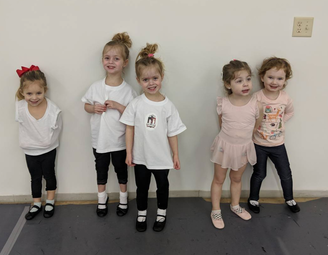 If you can walk, you can dance! Think your preschooler is too young to start dance? Think again! SRL Irish Dance Academy is proud to offer the Jump’n Jig program for our littlest dancers, aged 2 to 5! Split into two age groups (2-3 Tiny Jig and 4-5 Pre-Beginner,) this program was designed by early-childhood expert and ADCRG, Fiona Holmes. Classes start with helping our newest dancers learn how to act and engage within a dance class and move on to developing motor skills and musicality (all while making sure there’s plenty of fun in the meantime!) And with each class starting with a friendly welcome where they can bring along their favorite stuffed friend from home, SRL’s adoption of the Jump’n Jig program has helped get even the most reticent new dancer into the studio! 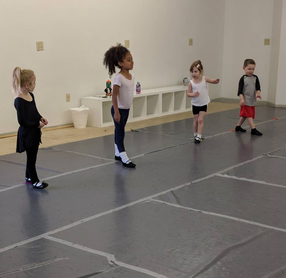 There’s plenty of benefits to starting your child in Irish dance (and starting them early!) and both our Tiny Jig and Pre-Beginner classes cover all the bases: safe social interactions with peers, instructors, and student mentors, working on not just foundational dance skills, but listening skills, and a way to grow a sense of personhood and independence. Beyond that are the physical benefits! We utilize two movement stations—circle time for direct interaction and a “track” across the room to practice skills solo—to work on single leg balancing (adding accessory movements gradually,) leg and foot strength, foot placement for Irish dance, moving on or around markers and targets, and concepts like right/left and front/back. These skills form a strong base for all forms of movement (think about football players taking ballet!) and many Tiny Jiggers move on through the levels and become life-long Irish dancers! Irish dance has a long and rich tradition and history behind it, but you don’t need to have Irish heritage to be an Irish dancer. While the steps and the music are part of Ireland’s cultural heritage, Irish dance has become a global community—and SRL is a tight-knit and supportive community within that larger sphere. In this encouraging environment, dancers are exposed to a culture beyond their own while they develop a strong sense of musicality and rhythm—learning to actively listen to the music, find the beat by clapping, and utilizing props so they can dance with the music instead of to the music (the hardest thing to teach a dancer!) 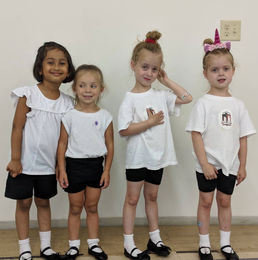 A successful SRL dancer isn’t just strong on technique—we see success as a confident, happy, and comfortable dancer! While classes run on a school year schedule from September to June, we have a special offer to let new dancers get a taste before they sign up in the fall! SRL’s Intro to Irish Dance Summer Camp sign-ups are now open for new dancers 2-12, with two sessions available at work-friendly drop off times for parents. Learn more about the program here, or feel free to reach out to our Office Manager at [email protected]. They’re happy to help! This post is part of a series. Take a look at our last 411 post, about the benefits of Irish dance, here. Also: check out the blog every Monday and Thursday for more posts about Irish history, dance culture, community news, and spotlights on our dancers, staff, and families—among other fun projects! And don’t forget to dance along with us on both Facebook and Instagram.
0 Comments
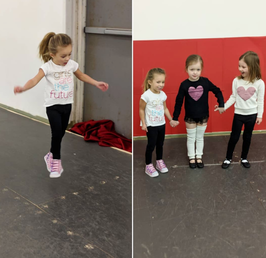 The question Irish dancers get asked the most is: why Irish dance? There’s a lot of amazing things to love about this artistic sport—its long and storied history, cultural enrichment, and beautiful costumes, to name a few—but the benefits of this particular type of dance can be wide-reaching, both physically and mentally, and even life-long! Let’s explore a few: Motor Skills & Mind-Body Connection: At the youngest age range—we offer classes starting a 2-years-old!--we concentrate on motor skills and correcting any left/right imbalances early in their development. Starting dance at any age is beneficial, but check out our post about the benefits of starting your dancer early here. Flexibility, Balance, Coordination, and Strength: While many dance studios in the past concentrated more on the steps than the conditioning, SRL has always been committed to providing balanced training that looks at what the whole dancer needs, not just their feet! All age groups are doing more than learning to dance, they’re stretching and completing exercises in class that strengthen the whole dancer. 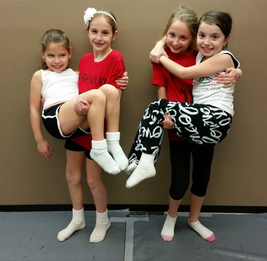 Independence: Whether your dancer is 12 or 2, they’ve been spending A LOT of time with you over the last two years. Going into dance class by themselves can be the first step toward forming their own personhood in this time when kids have been isolated at home more than ever. It’s also a fun, safe space for your dancer to make new friends without parental influence! Musicality: Irish dance is unique in many ways, but its connection to music is particularly strong! (Learn more about music in Irish dance here.) Dancers not only develop their sense of rhythm and a deeper understanding of music, but also cultivate an appreciation for traditional Irish music, often choosing to supplement their dancing by learning to play an instrument. Social Skills and Teamwork: Not all of Irish dance is a solo performance! Dance class is a great time for your dancer to practice appropriate social skills, as well as make new friends. Later goals can include céilí dancing and teams, where dancers learn to dance in unison and work together. 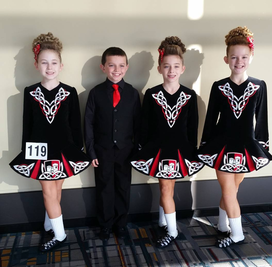 Goal Setting and Self-Determination: Whether the goal be big (going to Nationals!) or smaller (getting to perform in a fancier dress,) SRL is all about small, every day steps leading to larger goals. We help each dancer set personal goals in their dance career, and this example has proven to carry through in many dancers’ school performance and at home behavior. Irish dance is more about building up skills over time, and is less about instant gratification and more about hard work and dedication—skills that will serve them all their lives! Community: SRL is a community-focused studio where we’re all about supporting each other, even when we’re competing! But Irish dance is more than our studio, it’s a tight-knit, but also global community. All you need to enter that community is a love of Irish dance, and then you’re welcome! Interested in seeing all that Irish dance has to offer? Check out SRL’s Intro to Irish Dance Summer Camp for your dancer! This is a low-commitment way for students 2-12 (and their parents) to gage interest before signing up for classes. Check out the details (and the deals your session will include!) here. We hope to meet you soon! Have any questions? Feel free to email our Office Manager at [email protected]. They’re happy to help! This post is part of a series. Take a look at our last 411 post, a longer explanation of our Intro to Irish Dance Summer Camp program, here. Also: check out the blog every Monday and Thursday for more posts about Irish history, dance culture, community news, and spotlights on our dancers, staff, and families—among other fun projects! And don’t forget to dance along with us on both Facebook and Instagram. 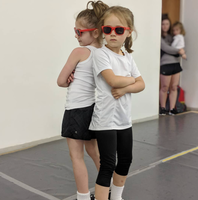 Does your child love to jump, wiggle, and move? Have they been bouncing off the walls all year? Are they obsessed with watching dance videos on YouTube when they get their coveted screen time? (Us, too!) Maybe it’s time to find a new outlet for all that excess energy…and why not try Irish dance? With Scoil Rince Luimni’s Intro to Irish Dance Summer Camp program, dancers from ages 2 to 12 will spend a week of classes letting that built up energy out, learning a new skill, and having safe, positive social interactions with new friends! This program is designed to really let your child try out this extremely active and fast-paced artistic sport in a secure and fun environment, but also to let you, as a parent, see if this is the right fit for your family. During one of our two Intro Summer Camp sessions, your dancer will take one class each evening (at a work-friendly time for parents,) for a full week to help them gage their interest (and get in some social time and physical exercise!) 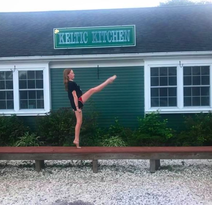 As Irish dance has innumerable benefits (like increased coordination, flexibility, balance, and strength…along with musicality and life skills such as goal setting, teamwork, and self-determination,) we’ve added extra value to the Intro to Irish Dance Summer Camp program, as well! While you’ll be able to meet our staff, explore the studio, and get a feel for what Irish dance is all about, your purchase of a session also gifts you the first four weeks of classes come September for free! For our littlest dancers in our Tiny Jig or Pre-Beginner programs (2-5) this comes to only $125, and for our Beginners (6-12) only $155. Sign up and see the full details here: Session 1: July 18-22 or Session 2: August 15-19 Ages 2-3, 5:00-5:25PM Ages 4-5, 5:30-6:00PM Ages 6-12, 6:00-6:45PM Have any questions? Feel free to shoot our Office Manager an email at [email protected]. They're happy to help!
We look forward to meeting you soon! This post is part of a series. Take a look at our last 411 post, all about the general benefits of summer camps, here. Also: check out the blog every Monday and Thursday for more posts about Irish history, dance culture, community news, and spotlights on our dancers, staff, and families—among other fun projects! And don’t forget to dance along with us on both Facebook and Instagram. 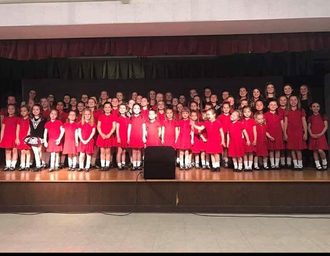 Read our original post on this subject here! At SRL Irish Dance Academy, our annual Showcase (aka our end of the year recital) is just around the corner! We have more first time Showcase participants than ever this year—both because of our bounty of new students, and the pandemic having paused the tradition for two years. We’re here to provide some tips that will hopefully help our dancers (and, by extension, their parents,) have a stress-free and fun time during this performance that’s more celebration than anything else! First off, we make sure to frame the recital in a casual way, and recommend you do so at home, too! We don’t stress this being a big, cumulative performance, but rather talk about it as a fun, low-key way for our dancers to share the skills they’ve learned this year (and the joy of dance) with friends and family. The audience isn’t the focus of the conversation—the dancer is! When they practice in class, we emphasize the importance of doing our best and showing our best skills, looking straight ahead and focusing on technique—not who’s watching them. 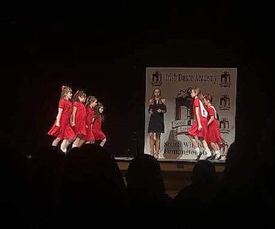 However, the audience is there and the dancers, no matter how little, will realize it eventually. Just make sure they remember—this isn’t any audience, it’s a friendly audience! It’s an auditorium full of moms and dads, sisters and brothers, aunts and uncles, and grandparents and friends that are there to do one thing: cheer each and every dancer on. Mistakes will happen, but no one in the audience will mind—they’re there to support and know that everyone on that stage is learning! Your dancer’s expectation of their self is likely higher than yours, just make sure they know that! And if they’re still feeling nervous? Practice makes perfect isn’t just a saying! There’s lots of way in this last week or so before the performance to help soothe their nerves. First off, try to make sure there’s no mirrors around while they’re practicing, so they can get used to an environment without them. However, feel free to record them performing for them to watch back—self-critique is an important skill to practice, and this is a fantastic opportunity. Lastly, try to work up a “mock audience”—this may be just your family, all their stuffed animals, or some friends from the neighborhood—the key is to help them treat the practice like the performance so it will feel normal day of. 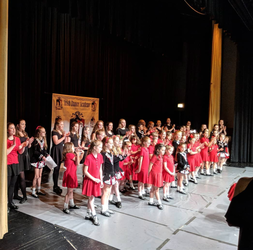 But our biggest tip? Don’t stress it! When you talk with your dancer about performing the emphasis should always be on the fun of performing. It’s a good idea to discuss what happens if and when they mess up—after all, even the most professional dancers still screw up on stage—and it comes down to three words: just keep dancing! This Showcase is supposed to be a fun time for them—if they fell down while playing tag, they’d get right back up and keep on running! Framing the performance as just another fun thing they’re doing with their dance friends is the best way for nervous dancers to keep going if they get scared. Don’t stress it goes for parents as well. Your dancer might freeze on stage, or decide to freestyle, or do everything backward. And that’s okay! It doesn’t mean they’re not learning in class, or not cut out for dance, or not cut out for performing—and we can guarantee there’s no mess up that will scar them for life. It’s important for both of you to remember this is the beginning of the road, emphasizing the achievement of going out on stage no matter what happens, and helping build their confidence on that bedrock. We have parents every year that swear their dancer is too shy or not ready—only to have that dancer go out on stage, and come back more independent, confidence, and proud of themselves then they were that morning. Just like Irish dance, performing is a skill that takes time to build, and this is just the beginning! 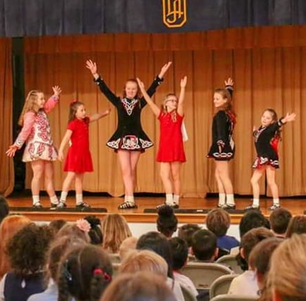 For our new and younger dancers, Showcase has a second opportunity in store for them: there’s no way they won’t leave inspired by the performances of the older and more experienced dancers. Many of our younger dancers will have never seen Irish dance performed at a higher level live, and can be a real moment of motivation for them—to see something like an “end” goal. Highly talkative dancers will likely leave and chat on and on about the hard shoe or Championship numbers, while our quieter dancers might show their passion for Irish dance in subtle ways—practicing more while no one’s watching, or writing or drawing about the Showcase. In any case, it’s the kind of excitement we’re looking to foster! Remember: the doors open at 2:45 pm for gold ticket holders and 3:00 pm for the rest of the audience. (Need to buy your tickets and can’t find the link? Email [email protected] ASAP!) There will be opportunities before the show to enter our raffle for some fantastic prizes, the proceeds of which will go to SRL’s fundraising efforts towards new costumes, competition stipends, scholarships, and equipment. We can’t wait to see you there! This post is part of a series. Read our last 411 post, our recital rundown, here. Check out the blog every Monday and Thursday for more posts about Irish history, dance culture, community news, and spotlights on our dancers, staff, and families—among other fun projects! And don’t forget to dance along with us on both Facebook and Instagram. 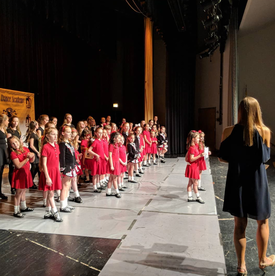 With SRL’s annual Showcase recital just around the corner (we hope you’ve marked your calendar: Saturday, June 18th!) we’re on the blog tonight with a rundown of all you need to know! After the past two years getting paused for the obvious reasons, we know many of our parents and dancers have never participated in an annual Showcase, so we’ve gathered all the info here for you to refer back to. First up: beforehand prep! While all dancers should have their costumes all set at this point, we recommend double-checking them now so nothing’s missing day of (no one wants to go looking for a second poodle sock in a scramble at 8 am for that afternoon’s performance.) And parents, if you don’t have your ticket yet, it’s time to buy! There are two kinds of tickets available: the Gold tickets, which allow you in to the auditorium at 2:45 pm to get priority seating, or the Standard, where you’ll enter at 3:00 pm for the 3:30 pm show! Remember: tickets are nonrefundable, but they are transferrable. If something comes up, you’re able to pass your ticket along to a family member or friend! Since this is a private event, all parents have received the link to buy tickets in the monthly announcements…but if you’re having any trouble locating it just reach out to [email protected]. 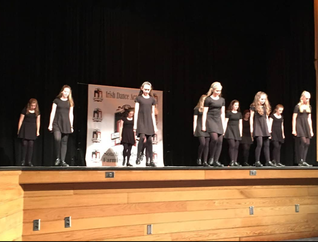 Now, the big stuff: day of! Dancers should be dropped off by their parents at 11:30 am at the East Catholic High School auditorium in Manchester for the all-important dress rehearsal (Tiny Jig dancers will arrive a little later at 1:30 pm.) The reasons for this early arrival are many. Dress rehearsals help newer dancers (and the experienced ones!) get used to the stage after only practicing in the studio, tamp down their nerves, get in some last-minute practice, and let dancers receive any last-minute corrections and tips before the big show! For our staff, it makes sure we can nail down things like lighting and cues, while working out any logistical kinks. Also, since dancers are backstage for the majority of Showcase, it gives them a chance to see the show! In the case of our littlest dancers (Tiny Jig and Pre-Beginner classes only,) one parent is allowed to attend rehearsal with each dancer and stay throughout the day until showtime. As only one parent (and no siblings, friends, etc.) are allowed to join each dancer, we understand that some parents may need to drop off their dancer—don’t worry, each class will have a parent volunteer assigned, so there will be plenty of supervision! While dancers Pre-Beginner and above will head back to backstage once they’ve performed, our Tiny Jig dancers will have a special place to sit to watch the rest of the show. One last bit of info for all ages: make sure your dancer eats before rehearsal and comes with plenty of snacks! It’s a long day, and we need our performers properly fueled! 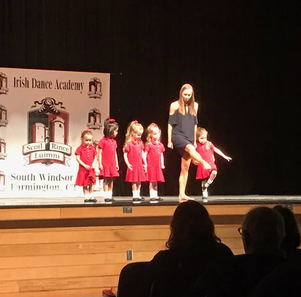 Then, on to the show! The Showcase will begin at 3:30 pm, wrapping up around 5 pm. This is our 8th Annual Showcase and aims to celebrate all our dancers—from 2-years-old to our Championship dancers—doing everything from showing off the new skills they’ve learned this year to displaying the best Irish dance has to offer in fun, exciting numbers! It’s also an opportunity to celebrate our 2022 graduates, scholarship recipients, and do some all-important fundraising for the studio. Make sure to check out all the incredible prizes we’ll be offering in our raffle this year, from Hartford Yard Goats tickets to Bear's Smokehouse gift certificates, and so much more! The final reminder? To have fun! Performing can be stressful, especially for young or new dancers, so our biggest focus is to make sure the fun of performing is emphasized for them so they’ll be excited to return to Irish dance and all its innumerable benefits next year! While performing isn’t necessarily every dancer’s goal, it can be a confidence-boosting and exciting experience that helps dancers mark their progress after a year of hard work. We look forward to seeing you, your dancer, and your enthusiasm there! This post is part of a series. Read our last 411 post, all the parental role in a dancer's development, here. Check out the blog every Monday and Thursday for more posts about Irish history, dance culture, community news, and spotlights on our dancers, staff, and families—among other fun projects! And don’t forget to dance along with us on both Facebook and Instagram. 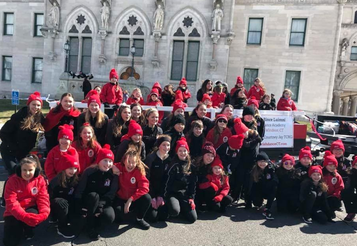 Read our first post about this topic here. It’s January, and we all know what that means: the winter doldrums are here. It’s hard getting back into the swing of things after the excitement of the holidays for adults, and it’s twice as hard for kids. Return to routine in the midst of a cold winter can feel daunting, but we’re here tonight to talk about the importance a parent’s influence has on a dancer’s development and why it’s more important this time of year than ever! First off, the first thing to remember is that every dancer has different goals, but that this is the time of year that can help determine how close they come to meeting those goals during this dance year. Every student that walks through the SRL doors has unlimited potential, but they don’t always want the same things. We’re starting to gear up for St. Patrick’s Day performance month here, followed by recital, and, for our more competitive dancers, Nationals and even Worlds—but a goal to make friends in class and participate in the parade is no less important than making it to the big stage. While this is the time of year it can be easy to let the lack of light get to us, it’s also the beginning of the second half of the all-too-short dance year, so here’s a few tips from Miss Courtney and some experts to help keep your dancer feeling encouraged, no matter how big or small their goals: 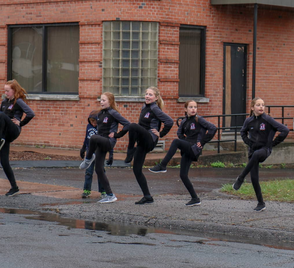 Show interest! It’s a simple thing, but can get the most burned-out dancer motivated for the classes ahead. An article in Journal for the Education of the Gifted explored this subject over a two-year study in relation to dance specifically, and found that parents “being there, sharing, and knowing” about the dancer’s classes were the most important factors in dancer development—even above specific pedagogical practices. What’s true for their academic life is equally true for their athletic and artistic development--parent engagement is the best predictor of success. It’s easy to get caught up in the hustle of day-to-day life, shuttling your kids between school and all their extracurriculars and you still have to figure out dinner…we get it! It’s a perfect storm that’s all go go go and very little time to slow down and ask about an activity when they still have homework to get done. Our suggestion is that even if it’s five minutes a day, or on the drive home, make sure to ask them questions—about their friends in class, what they learned, to show you something…a little goes a long way. Next, encourage, but don’t force them to practice! While no one in the studio is going to tell you practice isn’t a positive, forcing kids into practice can create a mental block that erases the positive effects (especially the psychological ones) of their favorite activities. There’s definite debate about this in the parenting world (check out this New York Times article that bounces back and forth between both sides of the argument,) and we know that you know your kids best, but we’d encourage you to think outside the box in terms of what “practice” may mean. You don’t necessarily see them tippy-toeing their way around their classroom, or skipping on the playground—or all of the small moments dance has crept into their life. To quote Miss Courtney: “In my book, dancers who are self-directed and enjoying their practice time will be so much more successful in the long run than dancers who set a timer with a frown on their face because mom or dad is making them practice.” 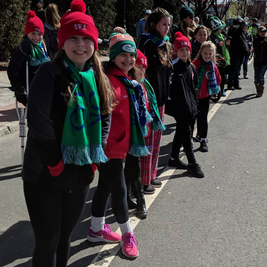 Then: embolden them to break out of their comfort zones! This one is especially for our nervous or shy dancers. We’re not saying, and will never say, to push them, but experts agree that acknowledging your boundaries and knowing when breaking them will lead to personal growth is a life skill key to continued success in all areas. Dance is the perfect arena to help your dancer learn and internalize this lesson. With so many performance opportunities coming up in the next few months, March is the perfect time of year at SRL to reframe performing as something fun rather than intimidating, a celebration of their dance achievements rather than something to be nervous about. It’s always a good time to help them see that new experiences can be positive ones! Lastly, make sure they feel prepared so they can feel confident! A dancer that comes to class in their school colors, hair neatly back, and on time, is going to have a better start than someone who runs in ten minutes late without their shoes. We’re all about letting your dancer take age-appropriate responsibility when it comes to getting ready, but creating a checklist you can go over together (whether it be for a performance, the recital, class, or a feis) is a great way to help them see their expectations so they can know when they’re meeting them. The Journal of Experimental Social Psychology agrees—going so far as to say that preparation in any field increases confidence across all other aspects of life! 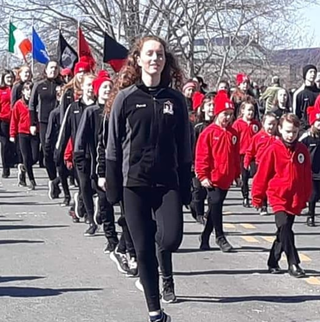 While we always want your dancer to succeed in studio, SRL also wants your dancer to succeed outside the studio, and we see these two facets and inextricably linked. But we’re only part of the equation! With a boost from the parental figures in their life—some interest, encouragement, and help preparing—we know every single one of our dancers can achieve whatever goals they set. This post is part of a series. Read our last 411 post, all about positive social media use, here. Check out the blog every Monday and Thursday for more posts about Irish history, dance culture, community news, and spotlights on our dancers, staff, and families—among other fun projects! And don’t forget to dance along with us on both Facebook and Instagram. Right now, we’re growing into a very specific generation of parents: those who understand and use social media, but didn’t necessarily grow up with the same breadth and pressure of social media that their children are currently facing. Whether you’re a fan of using these platforms or not, facts are facts and social media has become an unavoidable part of our lives--the Pew Research Center reported in 2018 that 95% of teenagers in America have access to smartphones, and 45% of those report being online “on a near-constant basis.” While you can’t completely control what your kid sees online, you can encourage them to develop a habit of positive social media usage where they make better choices about what they decide to consume. You, as a parent, know the dangers of social media—data breaches, cyberbullying, inappropriate content, and predators among the top issues—and while making your child aware of these possible risks and monitoring their usage is necessary, it’s not the only way to positively influence how they spend their online time. First off, the “social” aspect of social media is something to focus on! While it’s easy to view constant scrolling as isolating (and it can be,) the biggest reported positive takeaway teens get from social media is connection. With friends (81% of polled teens agreed!), with people who like the same TV shows and books and music, with other cultures and viewpoints and ways of life. Teaching your child from their first interactions with social media that it can be a positive way for people to stay connected (especially in this Covid world) is the first step to changing the way they see and then use social media. Then, we can also help kids be introspective about what they’re looking at and why. If they understand the purpose of social media as positive, they’re simply less likely to be sucked into any negative behavior. However, any lesson works better when you’re given concrete examples. Try scrolling with them through their feed (or yours, if they’re not allowed their own yet,) on Instagram or TikTok (just in case you haven’t heard, Facebook is apparently only for older people now,) and discuss different posts. There are many questions to pose, but there’s two big ones to start: Why did someone post this? and How does it make you feel when you see it? These questions will start your child thinking about the concept of other people having motivation around their posting, and how social media is intrinsically tied to our self-perception. Give an example where you unfollow a creator because their content is no longer serving you—maybe it makes you feel bad, or maybe you’re just no longer interested. Showing your kid how they control their own experience on social media is one of the keys to being able to use social media in a way that gives something, rather than takes away. Then, as they get older, you can find concrete examples of how social media can be used positively. There are many, but some favorites include: social media for social change and community outreach, social media for learning, and, of course, social media for creativity—including dance! Redirecting versus restricting your kid’s social media use allows them access to the world, but instead helps guide their content consumption in the right direction. Our recommendations? Do some research! Show your kid things like Greta Thunberg’s Twitter account where she uses her voice to advocate for better responses to climate change, or this report on how social media is letting emergency responders save more lives. And maybe they know more about this than they realize. Ask your child if they know any examples of people banding together on social media--K-Pop fans have been making the headlines recently, for instance—and let them teach you! And while a straight forward educational program might not be able to captivate your kid’s interest, what about a TikTok account that shows tons of cool experiments and the science behind them in easy-to-digest, short videos? The learning doesn’t have to be limited to the classroom—this study shows that our increase in social media use has had positive effects in promoting cross-cultural understanding. Every time your kid gets on their phone or computer, their able to experience far-flung places they’ve never even heard of through the eyes of someone else—talk about a way to build empathy! 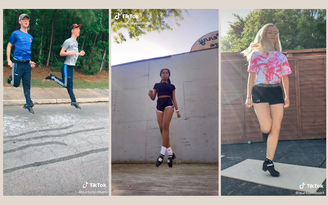 Many Irish dancers are taking to TikTok to play and learn! Many Irish dancers are taking to TikTok to play and learn! And remember: they are called content creators, after all. Opening ourselves up to the wider world helps open up our brains, increasing creativity as we see and consider new perspectives. And since you’re on the SRL blog, we bet your kid is a dancer, or at least an aspiring one. Irish dance social media is booming, and a real place of creation, community, and support. Check out the Irish dance tags across platforms and help your dancer find role models and examples in their favorite artistic sport. You can even encourage them to continue the trend of positive social media if they seem interested in making their own content with the same conversations--Why are you posting this? How does it make you feel? How might it make others feel? Remember: social media learns our habits (through a process too complicated for us to explain here,) and while that can sound a bit creepy, it also means the more your kids focus on positive social media, the more positive social media they’ll see! While banning social media totally may seem like the best idea, we all know the stories about what happens when you tell a kid they can’t have something everyone else has—they find a way to rebel. Shaping the conversation around social media in your household will help your kid feel a sense of independence and personhood where they’re better able to make good decisions for themselves. And, adults, this advice is for you too! It’s all too easy to get swept away in people’s beautiful vacations and perfect photos on social media—we need a reminder that we control the content we consume sometimes, too! This post is part of a series. Read our last 411 post, all about the benefits of mixed-age range classes, here. Check out the blog every Monday and Thursday for more posts about Irish history, dance culture, community news, and spotlights on our dancers, staff, and families—among other fun projects! And don’t forget to dance along with us on both Facebook and Instagram. 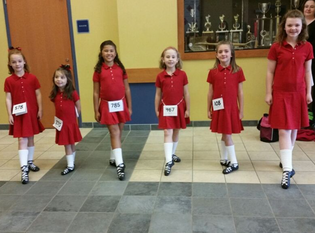 Something we love about Irish dance? How it sets obtainable and clear goals to work hard toward! This is an element that exists in every level of SRL’s classes—certain skills are a pre-requisite for moving onward and upward from Tiny Jig to Pre-Beginner, from Novice to Prizewinner, and beyond. It’s one of the reasons we think Irish dance is more than exercise and artistry—it’s a place to gain life skills that will serve your dancer across the board as they learn and grow. It’s never too early to learn patience, process, and the importance of persistence and hard work. Check in on any level of class—from our Championship dancers to our Beginners just starting out—and you’ll notice something you might not see at another kind of dance studio: a mixture of ages across all levels. While most other dance disciplines organize students both by age and skill level, Irish dance tends to organize only by skill level, something we hold to here at SRL. For students starting out in the early levels, this can be a surprise: if you’re starting Irish dance at 11 and are in class with 6-year-olds, you might feel like you’re late to the party or in the wrong class. That couldn’t be further from the truth! We’re here to talk through the benefits of mixed-age classes, and why SRL thinks they’re a benefit to our dancers.  First off, Irish dance isn’t just about dancing—it’s a hard-won skill that builds upon itself. You have to learn your jump-2-3s before you can learn your reel! Much like other forms of exercise that require openness and mindfulness to the process (such as other forms of dance or yoga,) Irish dance encourages dancers to understand their movements (and the paired music) on a fundamental level before they move on to more difficult moves and more complex choreography. When you watch an Irish dancer perform, what you’re really watching is many more basic, singular movements learned over many years that the dancer is in full control of. It’s why they look so light and graceful—practice, practice, practice! This way of determining skill level also functions as a safety measure. With Irish dance’s high-flying moves, proper technique is required to avoid injury. You can’t skip any steps! Secondly, Irish dance holds all dancers to the same standard no matter their age, race, gender, or experience. The strict regulation of Irish dance by the CLRG has led to the establishments of clear benchmarks that any dancer needs to clear before moving on. That means we can have 17-year-old students in class with 10-year-old students, because while these students may differ greatly in many ways, they all have the same foundational skills that makes them equals in the eyes of Irish dance. While the world isn’t always so fair, it does teach an important lesson to our dancers about the benefits of working hard to improve—you only get as much out of Irish dance as you put in and no one is rewarded by moving up a level simply for the fact they had a birthday! 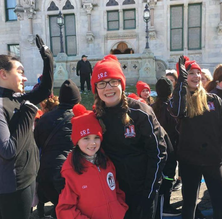 Lastly, and perhaps most importantly, here at SRL we love our mixed-age classes because of the peer-to-peer learning environment in encourages! Much like a Montessori school, we find that our mixed-age classes better stimulate all age groups’ development, improve social skills across the board, boost self-esteem, increase the taking on of leadership roles, and better simulate actual community environments. Beyond bonding with your classmates, we also encourage friendships and mentorships amongst age groups through buddy pairings for competitions and our student assistant program. This gives our younger students strong role models within the studio that they’ll then strive to emulate as they grow, but also gives our older students a chance to become those role models and try out teaching at a young age. We find this way of teaching mutually beneficial and motivating for dancers of any and all ages (with our instructors’ guidance, of course!) So, parents, don’t worry if your Beginner (or not-so-Beginner) dancer is initially unnerved by the older or younger students in their class—it’s all part of the process! While initial misgivings are understandable, especially as most dancers will have only interacted with peers of their same age, there’s benefits they might not be able to see at first glance. At SRL, we look at everything that happens inside our walls as a learning opportunity for our students…whether it be a new step or adjusting to a class they didn’t expect. As long as a dancer is putting their all in, there’s nowhere to go but up! This post is part of a series. Read our last 411 post, all about communicating with your teen, here. Check out the blog every Monday and Thursday for more posts about Irish history, dance culture, community news, and spotlights on our dancers, staff, and families—among other fun projects! And don’t forget to dance along with us on both Facebook and Instagram. So, your littlest dancer is finally through their transition period and back into the school year schedule, but the burnout hasn't seemed to stop for your teen. What's going on with them? Is there too much stress or not enough structure, do they now dislike all their favorite activities or are they just...a teenager? Most every parent is grappling with the constant ebb and flow of their kid's moods during this time in their life, and it's no surprise—they're figuring out who they are. There's no easy answer to any of your questions flat out, but we're here to help keep you better informed about the whys of these mood shifts and interventional tactics to help start conversations that help solve problems rather than start arguments. So what is the current generation facing? Between the pressures social media puts on their self-esteem, cultural shifts, concerns about the environment, the continuing pandemic and its linked uncertainty, complex and divisive political upheavals, increased academic competition and expectations, and the time-honored teen stresses of bullying and peer pressure—the truth is, they may be dealing with more than any generation before them. Not only that, with our exponentially and rapidly changing world, the classic complaint of parents just don’t understand is also likely more true than ever. It’s easy to see how everything, sometimes even the littlest thing like heading out to their favorite dance class, becomes an argument—teens today are dealing with a lot of adult issues and stresses a lot earlier than past generations, and it must be overwhelming! You can couple that with the fact that the teen brain and the adult brain are biologically different. Fully developed, adult brains generally come at problems with the rational, empathetic, long-term considerations of the pre-frontal cortex, while teen decision-making stems from the emotional amygdala—this explains why they can’t always explain why they reacted the way they did…it’s possible they literally weren’t thinking, just feeling. But this doesn’t make your teenager any less intelligent. The truth is, that while they’re still learning, the brain’s ability to formally plan, abstractly reason, and memory retention in general is done developing by 15 or so—if asked about a situation hypothetically, they can respond as any adult might. The issue stems from a mixture of amygdala-based reactions in the moment and the laundry list of increasing and changing hormones (one example: the adolescent male brain is producing 10x the amount of testosterone it previously was!) But do you do about it? First off, expect it! It can be shocking when your sweet, well-behaved kid turns depressed, angry, or apathetic, but coming at it from a place of understanding is the best way to model healthy ways to deal with those feelings. As adults, we know that sadness, anger, and apathy don’t exist in a bubble—those feelings are the product of different stresses and chemical combinations in an individual’s brain. For example, generally, the problem isn’t that you asked them to load the dishwasher, the problem is something that happened at school, how much homework they have, etc. It can be extremely difficult not to react in a negative way to someone slamming doors and yelling, but taking the time to help them express that anger in a healthy manner (i.e. finding the root cause of it and helping them work toward solutions, looking at scenarios and their consequences together, and practicing techniques (breathing, exercise, talking through it, writing it out, ec.) to help them deal with their emotional upheaval,) models better ways to deal with stress that will follow them into their adult lives. Communication, like anything else, is the kind of skill that takes practice—especially when it comes to its give and take nature. One of the easiest ways to slow down a meltdown (or get your teen to talk) is to ask them a simple question that can help put expectations on the interaction for both parties: Do you want me to listen, or do you want me to help you find a solution? There’s plenty of ways to make sure your dancer knows you care about them and the way they’re experiencing the world, but listening to what they need from you when they’re experiencing high emotions may be the best one. It not only continues to model healthy emotional behaviors, but puts your trust in their ability to know what they need, validates their emotional life, and lets them trust their self. It’s a step toward emotional independence and it puts the interaction in their hands—giving them concrete decisions to make while their amygdala is rioting.
But listening doesn't mean giving in to every demand--innumerable studies show that teaching your teen to honor commitments and keep to a schedule can help in every area of their life. From academic success to personal integrity and an increase in self-confidence and easier adjustments to adulthood, it's all about learning to be a responsible person in a safe environment. It also helps them become more empathetic and community-minded (i.e. my choices effect others) in a time in their lives it's easy to revert to an inward-facing gaze. Another equally important aspect? Exercise! Everything listed above goes for exercise too! Not only does exercise have academic, physical, and emotional benefits, it helps create healthy, lifetime habits in your teen. It's all a balance between their wants and their needs, with their parents the best judge and lead how to balance these sometimes conflicting desires. Like we said at the beginning—there’s no simple answer to how to be a parent of teenagers, and it’s not always going to go well. You can help encourage them keep to their commitments, to keep a schedule, to exercise, to get enough sleep, to eat healthy, as well as support them and let them know you believe in their resilience, intelligence, and abilities, and they could still be the same moody, anxious teenager. But, the key really is the listen half of communication—when your child is looking to drop a favorite activity, for example. Is this stress and pressure and too much going on for them? Or is there something else underlying the decision? Have they changed and want to pursue something else and have thought through the consequences of the change…or are they reacting emotionally because of something else? The only way to know is to open up communication and truly hear what they have to say. This post is part of a series. Check out our last 411 post, all about back to school burnout for your younger dancer, here. Check out the blog every Monday and Thursday for more posts about Irish history, dance culture, community news, and spotlights on our dancers, staff, and families—among other fun projects! And don’t forget to dance along with us on both Facebook and Instagram 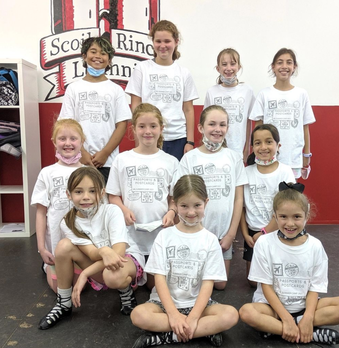 After the fun of an SRL summer camp, it can be hard to go back to routine! After the fun of an SRL summer camp, it can be hard to go back to routine! Read our post on this topic last year, here. Let’s face it: last year was one of the most exhausting of any of our lives, your dancer’s included. Now, as a new school (and dance!) year begins, it will be easier than ever for your dancer (and you) to feel overwhelmed, tired, and just plain burnt out. While adults have to shoulder the challenges of their own responsibilities, our day to day lives have less change month to month, no matter the season. In contrast, kids are learning, changing, and growing every day, making each new school year a completely new adventure—all while trying to figure out who they are in the It’s hard to imagine with the remove of age the incredible stress our dancers go through as they grow in these tumultuous times, and that’s why we wanted to take a moment to talk about back to school burnout. It’s real. It can transform your energetic, happy kid into a someone else: lethargic, disinterested, and combative. And it may be coming to your household soon (if it hasn’t already arrived!) So what can you do to help? The first steps to any problem are always the same: recognize the reality and breadth of the issue, make a plan to help fix it, and stick to the plan. First off, burn out during (and especially at the beginning of) the school year is completely normal, to the point that innumerable psychological studies have researched it. These studies largely agree that not only is burnout a problem across the world, it can negatively affect a student’s academic achievement throughout their lives--so the earlier it’s mitigated, the better. When left untreated, it’s been found to increase a student’s general exhaustion, cynicism, and feelings of inadequacy. It’s never too early to help your child learn how to better mitigate stress, especially as it may improve the quality of their entire life ahead of them. Now that we can see how big the scope of the problem is, let’s focus on how to fix it. Above and beyond all other interventions, exercise has been found to be the best possible practice to combat back to school burnout, across the board. We’d, of course, recommend Irish dance for something that’s a fun, culturally enriching social outlet that helps builds other stress-mitigating habits like goal setting and confidence (read more about Irish dance’s benefits here,) but movement of any kind truly is the key. 2.5 hours—which is less than a half hour a day—of any moderate movement-based activity a week is the standard recommended by medical organizations across the board. Beyond the most obvious reason--physical health—exercise has been proven to help decrease stress and increase endorphins (among other happy-brain chemicals,) as well as boost overall energy and mental acuity. At the same time, exercise classes (like dance!) promote community and social development, while also promoting better sleep habits when your kids get home. So, we have at least one, big idea of how to combat the burnout—but what is that isn’t enough? There’s a ton of tips to integrate into your family’s life from experts all over the world, and it’s all about finding the right combination for you and your family. Here’s a few to try to integrate, but feel free to leave your own, more specific solutions in the comments! 1) Commit to a reasonable number of activities, but don’t say yes to everything. 2) Be flexible, but be clear about your expectations. 3) Keep as regular sleep schedule as possible. 4) Eat a balanced diet. 5) Forge open communication within your family. 6) Encourage asking for help whenever you need it. 7) Put a limit on screen time. 8) Make sure to make time to relax and decompress. 9) Set goals and celebrate achieving them. The last part of the plan might be the most important: whatever plan you make, stick to it! The literature is clear on this: kids thrive when given a routine to follow. Simply put: the big, big world becomes a little less overwhelming when you help your dancer understand exactly what’s coming next. And it won’t just help now: regularity in daily and weekly routines has been proven to produce better adjusted and more successful adults across the board, in all fields. Other benefits include improved attention span and self-control, better time management, decrease in anxiety, better social skills, a higher level of emotional intelligence, better academic performance, and even increased employability in adulthood (among others.) Routine is like building a structure for your child to grow into—it’s up to you to determine what that structure looks like. And, just as importantly, don’t forget to include yourself here too! Adults spend so much time taking care of others, it’s easy to push our own wellness to the back--but a parent’s mental health has been determined to have a direct effect on their children. Fighting against that burnout is a family endeavor, and all the above tips apply to our SRL parents as well! We look forward to seeing you all back in the studio, hopefully armed with some tips to make the transition as smooth as possible for the entire SRL community! This post is part of a series. Read our last 411 post, where our dancers tell you why they love SRL in their own words, here. Check out the blog every Monday and Thursday for more posts about Irish history, dance culture, community news, and spotlights on our dancers, staff, and families—among other fun projects! And don’t forget to dance along with us on both Facebook and Instagram. 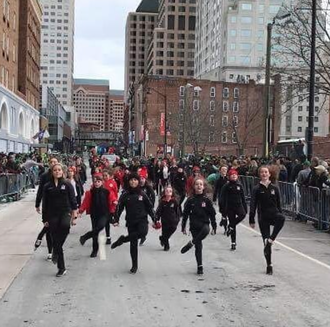 Part 2 Interested in trying out Irish dance, but aren’t entirely sure? We could talk all day long about the benefits Irish dance has, physically, mentally, and socially (and we have—check out these posts to learn more!) but why don’t we let some of our dancers tell you a little more about why they love Irish dance here at SRL! We hope you’ll join us! Looking for: far-reaching life skills? “Irish Dance trained me to have a very high stamina, physically and mentally. Courtney was the best at pushing her dancers towards their goals. I know how to work towards long term goal without being worn out, and to push through to the very end.”—Lindsey Looking for: competitive spirit? “My favorite thing about dance is the competition. I like that in Irish dance you can show off how much you've learned and progressed.”—Magnus 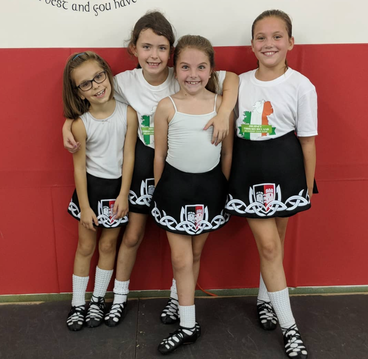 Looking for: enjoyment and self-expression? “When there are no words to explain how you feel, you express yourself through dance. I remember there would be nights when…I was tired, but when I walked through those studio doors I knew it was my time to work. And when I walked out of those doors at the end of the night, I felt like a better person.”—Lindsey Looking for: an online option? “My favorite thing about online class is I can dance at home safely and there’s more one on one with the teacher. Plus, my mom is there to help if I'm struggling.”—Avonlea Looking for: inspiration? “I look up to Courtney because she has given me a second home and something that I truly love.”—Ellie Looking for: friends? “Dance has given me the ability to have friends all around the world that share the same love and passion for Irish dance that I do.”—Christian 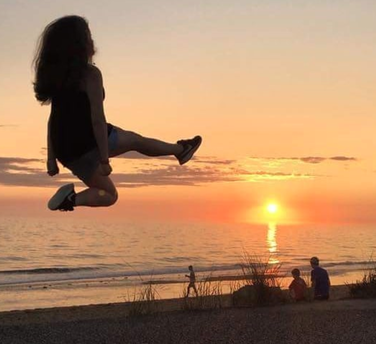 Looking for: somewhere to learn and grow? “Irish dance was a life changing experience that provided me with so many opportunities to learn and grow. It was a daily challenge, which inspires my work ethic today. I always aim high and dream big. Through Irish Dance, I learned by working hard and practicing my craft, I could achieve anything.”—Tara Looking for: something to be passionate about? Just take Tilly’s word for it: “I like Irish dance and you will too!” If your dancer is looking for it, SRL has it! While classes run on a school year schedule from September to June, we have a special offer to let new dancers get a taste before they sign up in the fall! SRL’s Intro to Irish Dance Summer Camp sign-ups are now open for new dancers 2-12, with two sessions available at work-friendly drop off times for parents. Learn more about the program here, or feel free to reach out to our Office Manager, Devon, at 860-385-1107 or shoot her an email at [email protected]. She’s happy to help! This post is part of a series. Take a look at our last 411 post—tons of testimonials from parents!— here. Also: check out the blog every Monday and Thursday for more posts about Irish history, dance culture, community news, and spotlights on our dancers, staff, and families—among other fun projects! And don’t forget to dance along with us on both Facebook and Instagram. 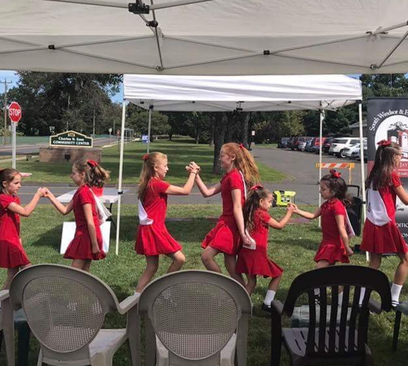 Part 2 Is your child interested in dance, but you’re not sure where to start? Why not Irish dance? We won’t try to convince you (check out these multiple posts in case you want some more convincing—we do have a strong case,) but thought we’d let our amazing community of parents tell you why SRL is the right choice, instead! Looking for: exercise with purpose? “Physically it’s helped with coordination and strength. But it’s also helped with focus and determination. And it’s given them a fun way to get their wiggles out and make new friends.”—Evelyn Looking for: cultural enrichment? “I’m Irish, I’m involved in the Irish community, and I thought this might be another way to engage my daughters in an activity that would be great for them and also tied to their ancestry.”—Siobhan Looking for: a confidence boost? “Dance has built [my dancer’s] confidence and has opened her up to experiencing new things.”—Christina 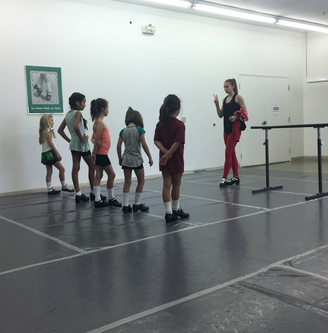 Looking for: dance that teaches life skills? “I think Irish dance has taught [my dancer] perseverance, grace under pressure, humility and the understanding that its ok to not be ok! Do your best work and enjoy the journey.”—Christine “I love the way the classes are structured to challenge the students just so much that also pushes them forward in their learning.”—Andrea Looking for: a way to encourage goal-setting? “[My dancer] is competitive and she wants to do well, but she’s a little girl who can be easily more interested in other things. Dancing with SRL and Miss Courtney has given her ways to practice at setting goals and working toward them. This was never more true than her second year when she was struggling with reading in first grade and simultaneously did poorly at a feis. Right after that, she set two goals—which she even wrote down—to get better at reading and to get better at Irish dance. By the end of that year, she had improved dramatically at both.”—Siobhan 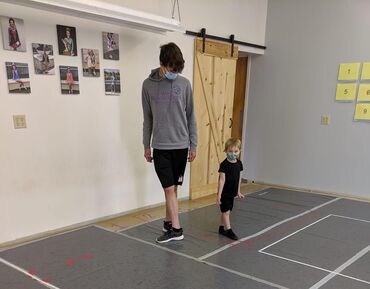 Looking for: a unique, year- round activity? “If your child loves to dance, they should try Irish dance. It’s different than any other style of dance…[My dancer] has been doing other types of dance for years, but Irish dance is beautiful and unique.”—Christina Looking for: an outlet for male dancers? “On an uncommon comparison, I often think it has similar qualities to karate with the discipline, athleticism, and focus. But, Irish dance has joy and musicality that takes it to another level; this is why I think it’s also very good for boys even though it may not be the first thing one thinks.”—Siobhan Looking for: community and support? “I’m amazed at the choreography [my dancer] memorizes. I was so proud that she quickly gained the confidence to participate in a public performance and also do her first feis. I enjoyed watching her teach a dance to some younger Girl Scouts at one of our meetings last year, and I love that she has volunteered to help out at SRL classes with younger children—it’s all been a great growing experience for her in many ways.”—Becca “I wanted [my dancer] to get involved in something, but she did not want to try the traditional tap, jazz, ballet route. I got her to try a class at SRL the summer she was 4 years old and she fell in love with the dancing, the older kids, and of course Miss Courtney.”—Andrea 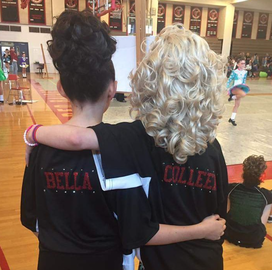 Looking for: options? “Irish dance is great because it is completely up to you and your dancer as to how involved you want to be. Competition and performances are optional or you can choose to compete every weekend if you want. It’s a unique skill to have and fun to get to show it off!”—Jill L. If you’re looking for it for your dancer, SRL has it! While classes run on a school year schedule from September to June, we have a special offer to let new dancers get a taste before they sign up in the fall! SRL’s Intro to Irish Dance Summer Camp sign-ups are now open for new dancers 2-12, with two sessions available at work-friendly drop off times for parents. Learn more about the program here, or feel free to reach out to our Office Manager, Devon, at 860-385-1107 or shoot her an email at [email protected]. She’s happy to help! This post is part of a series. Take a look at our last 411 post—tons of testimonials from dancers!— here. Also: check out the blog every Monday and Thursday for more posts about Irish history, dance culture, community news, and spotlights on our dancers, staff, and families—among other fun projects! And don’t forget to dance along with us on both Facebook and Instagram. 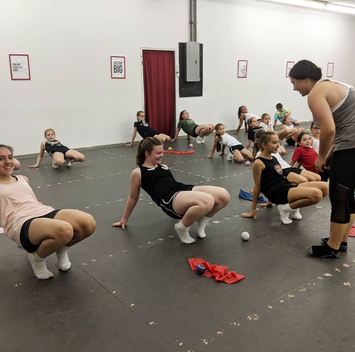 Part 1 Interested in trying out Irish dance, but aren’t entirely sure? We could talk all day long about the benefits Irish dance has, physically, mentally, and socially (and we have—check out these posts to learn more!) but why don’t we let some of our dancers tell you a little more about why they love Irish dance here at SRL! We hope you’ll join us! Looking for: exercise? “I love all kinds of dance but Irish dance is a fun fast kind of dancing!”—Rooney Looking for: long-lasting life skills? “As an adult, my time at SRL taught me the value of time management, passion and persistence. Until college, I was a multi-sport athlete, competitive dancer and a participant in various other extracurricular activities. I learned quickly how to manage my school load with these other commitments to keep everything in balance. I hold myself to a high standard to do everything the best I can, so being able to manage that while maintaining a passion for the sport taught me so much. Today, I approach everything I do with passion and persistence while remembering I have to manage my time well to accomplish all of my goals.”—Tara 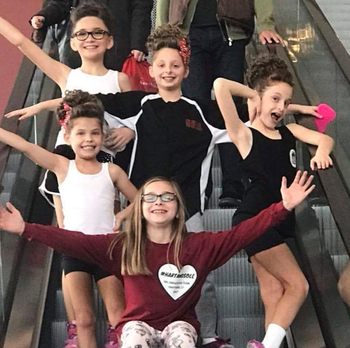 Looking for: enjoyment and self-expression? “I believe there are many reasons behind why people dance, including because friends or family members did it in the past or currently do it now. But I think that some people dance for the same reason I did: for a way to escape reality from time to time. I remember going to the studio, totally forgetting about the outside world, and just living in the moment that was happening throughout dance class.”—Christian Looking for: cultural enrichment? “I think people dance because it is freeing. In Irish Dance, it is you and the floor working in harmony to produce something beautiful and culturally significant. It is a personal challenge…where the only opponent is yourself. It is also an opportunity to celebrate a culture very few understand. To represent and celebrate my Irish heritage through dance has connected me more with my family’s ancestry.”—Tara Looking for: a supportive environment? “SRL is an amazing community where all the dancers and teachers are very motivating, inspiring, and caring.”—Bailey 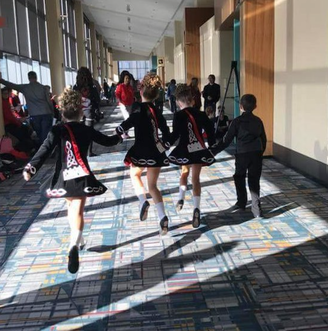 Looking for: friends? “SRL has provided me with so many opportunities and memories that will last a lifetime.”—Lindsey Looking for: peer mentors? “I always loved my time as an assistant teacher for Courtney and still keep in contact with some of my students today. When they finally got their jumps or skips, it was such a proud moment for me. I miss working with them!”—Tara Looking for: something to be passionate about? Just take Colby’s word for it when asked what he loves most about Irish dance: “Everything.” If your dancer is looking for it, SRL has it! While classes run on a school year schedule from September to June, we have a special offer to let new dancers get a taste before they sign up in the fall! SRL’s Intro to Irish Dance Summer Camp sign-ups are now open for new dancers 2-12, with two sessions available at work-friendly drop off times for parents. Learn more about the program here, or feel free to reach out to our Office Manager, Devon, at 860-385-1107 or shoot her an email at [email protected]. She’s happy to help! This post is part of a series. Take a look at our last 411 post—tons of testimonials from parents!— here. Also: check out the blog every Monday and Thursday for more posts about Irish history, dance culture, community news, and spotlights on our dancers, staff, and families—among other fun projects! And don’t forget to dance along with us on both Facebook and Instagram 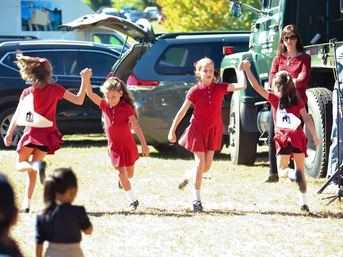 Part 1 Is your child interested in dance, but you’re not sure where to start? Why not Irish dance? We won’t try to convince you (check out these multiple posts in case you want some more convincing—we do have a strong case,) but thought we’d let our amazing community of parents tell you why SRL is the right choice, instead! Looking for: exercise with purpose? “It’s been great for working on his balance as well as giving him a way to learn something fun that he enjoys.”—Michaela Looking for: a confidence boost? “[Irish dance has given my dancer the] confidence in herself to be able to perform in front of large audiences. She is able to give herself goals to work towards and she knows that it will take time and hard work to achieve and is willing to put the effort in because she can see the progress happening.”—Jill Looking for: dance that teaches life skills? “There’s the movement, the exercise and athleticism, the focus that some children need to burn off the extra energy while learning self-discipline in a fun way.”—Siobhan “The most important lesson [my dancer’s] learned are the benefits of hard work and never giving up.”—Judy 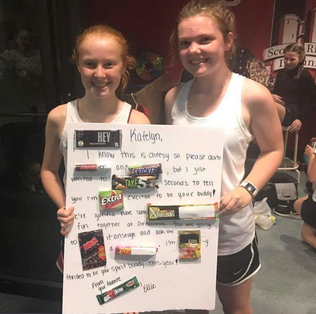 Looking for: peer mentoring opportunities? “I think Irish Step Dancing has been the first time [my dancer] has really felt challenged. But because she enjoys it so much and because of the guidance from the older girls…and of course from Miss Courtney’s teaching and motivation, she continues to try even when she gets so upset that she is not getting a step the first time around.”—Andrea Looking for: a unique, year-round activity? “Go for it!!! Some of the reasons I love it are because it is a year-round outlet for my daughter (and her dance mates.) She does not have to wait a whole year for one recital. She has competitions in the fall, performances throughout the winter and early spring, more competitions in the spring and summer, camp and other regular opportunities to dance, hone skills, perform, and become close with her friends.”—Siobhan Looking for: musical appreciation? “[Irish dance’s] upbeat cadence and structure definitely appeal to [my dancer] more than ballet or jazz dance. And as a musical family with 3 violin players, we love hearing the beautiful reels and jigs!”—Becca 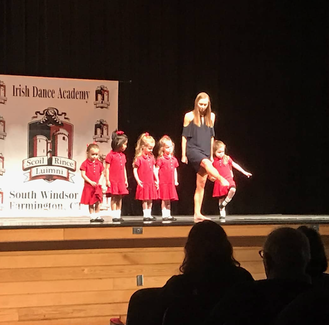 Looking for: a talented staff? “[We were] looking for a focused experience that would allow her to continue to advance competitively. Working with Courtney, and now with the addition of Christian and Bailey, [my daughter] has continued to improve as a dancer…I can honestly say the time spent working with the teachers at SRL and the friendships she has forged with other dancers are by far the best things that have happened to her.”—Laura Looking for: community and support? “[Our dancers] have learned how to set long term goals and create plans to achieve them, time management and how to take corrections, the importance community and volunteerism, these are just a few.”—Ken & Dana “I’m amazed at the choreography [my dancer] memorizes. I was so proud that she quickly gained the confidence to participate in a public performance and also do her first feis. I enjoyed watching her teach a dance to some younger Girl Scouts at one of our meetings last year, and I love that she has volunteered to help out at SRL classes with younger children—it’s all been a great growing experience for her in many ways.”—Becca Looking for: a happy kid? “Give it a whirl! Just be aware that anything hanging on your walls will be off kilter from your student constantly jumping and kicking down the hallways. 😉”—Becca 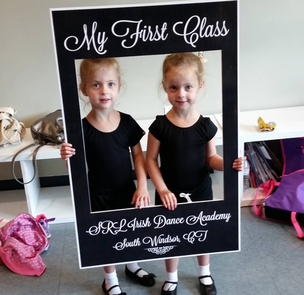 Looking for: a way to try things without commitment? “[Our dancer] quit soccer, basketball, ballet, tap, AND jazz! We were just hoping something would stick. Courtney offered a week-long mini-camp that gave [our dancer] a chance to try it out before committing to anything long-term.”—Ken & Dana If you’re looking for it for your dancer, SRL has it! While classes run on a school year schedule from September to June, we have a special offer to let new dancers get a taste before they sign up in the fall! SRL’s Intro to Irish Dance Summer Camp sign-ups are now open for new dancers 2-12, with an August session available at work-friendly drop off times for parents. Learn more about the program here, or feel free to reach out to our Office Manager, Devon, at 860-385-1107 or shoot her an email at [email protected]. She’s happy to help! This post is part of a series. Take a look at our last 411 post, all about our Tiny Jig program, here. Also: check out the blog every Monday and Thursday for more posts about Irish history, dance culture, community news, and spotlights on our dancers, staff, and families—among other fun projects! And don’t forget to dance along with us on both Facebook and Instagram. 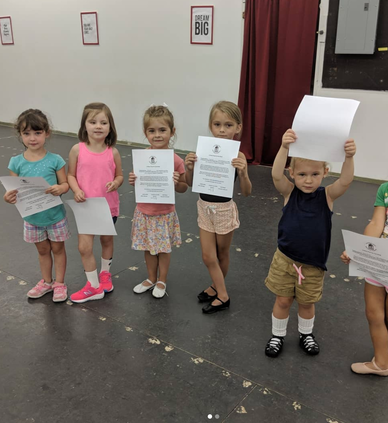 If you can walk, you can dance! Think your preschooler is too young to start dance? Think again! SRL Irish Dance Academy is proud to offer the Jump’n Jig program for our littlest dancers, aged 2 to 5! Split into two age groups (2-3 Tiny Jig and 4-5 Pre-Beginner,) this program was designed by early-childhood expert and ADCRG, Fiona Holmes. Classes start with helping our newest dancers learn how to act and engage within a dance class and move on to developing motor skills and musicality (all while making sure there’s plenty of fun in the meantime!) And with each class starting with a friendly welcome where they can bring along their favorite stuffed friend from home, SRL’s adoption of the Jump’n Jig program has helped get even the most reticent new dancer into the studio! There’s plenty of benefits to starting your child in Irish dance (and starting them early!) and both our Tiny Jig and Pre-Beginner classes cover all the bases: safe social interactions with peers, instructors, and student mentors, working on not just foundational dance skills, but listening skills, and a way to grow a sense of personhood and independence. Beyond that are the physical benefits! We utilize two movement stations—circle time for direct interaction and a “track” across the room to practice skills solo—to work on single leg balancing (adding accessory movements gradually,) leg and foot strength, foot placement for Irish dance, moving on or around markers and targets, and concepts like right/left and front/back. These skills form a strong base for all forms of movement (think about football players taking ballet!) and many Tiny Jiggers move on through the levels and become life-long Irish dancers! 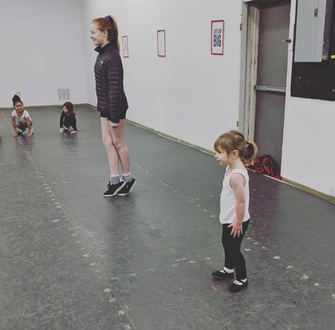 Irish dance has a long and rich tradition and history behind it, but you don’t need to have Irish heritage to be an Irish dancer. While the steps and the music are part of Ireland’s cultural heritage, Irish dance has become a global community—and SRL is a tight-knit and supportive community within that larger sphere. In this encouraging environment, dancers are exposed to a culture beyond their own while they develop a strong sense of musicality and rhythm—learning to actively listen to the music, find the beat by clapping, and utilizing props so they can dance with the music instead of to the music (the hardest thing to teach a dancer!) A successful SRL dancer isn’t just strong on technique—we see success as a confident, happy, and comfortable dancer! While classes run on a school year schedule from September to June (with every class available as in-person, online, or a hybrid model,) we have a special offer to let new dancers get a taste before they sign up in the fall! SRL’s Intro to Irish Dance Summer Camp sign-ups are now open and is a perfect way to judge your littlest dancer’s interest before committing more fully. With two sessions available at work-friendly drop off times for parents, your session also includes discounts on registration and your first four weeks of classes come September. Learn more about the program here, or feel free to reach out to our Office Manager, Devon, at 860-385-1107 or shoot her an email at [email protected]. She’s happy to help! This post is part of a series. Take a look at our last 411 post, all about our studio, here. Also: check out the blog every Monday and Thursday for more posts about Irish history, dance culture, community news, and spotlights on our dancers, staff, and families—among other fun projects! And don’t forget to dance along with us on both Facebook and Instagram. 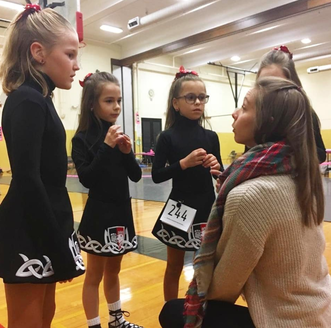 Miss Courtney encouraging dancers before a performance. Miss Courtney encouraging dancers before a performance. Tradition. Passion. Dedication. Welcome to Scoil Rince Luimni, also known as SRL Irish Dance Academy! We’re a small, independently-owned Irish dance studio located in South Windsor, Connecticut and we’re so happy you’re here. A little about us: SRL was founded in 2014 by Courtney Jay, TCRG after she finished her BA in Irish Music and Dance at the University of Limerick. (In fact, that’s why we’re SRL—in Irish Gaelic Scoil (scull) is school, Rince (ring-ka) is dance, and Luimni (lim-nee) is Limerick!) Miss Courtney, as the dancers call her, has been an Irish dancer her whole life and has been teaching and mentoring younger dancers since she was 13. During her time in Limerick, Courtney trained at the Fleming-Ball School of Irish Dance, where she danced her way to 2 solo world medals, regional titles in solo and team championships, and top 10 at every international major competition. Before leaving Ireland, Courtney was certified by the CLRG (the largest and oldest governing body of Irish dance in the world) and then came home to Connecticut to create SRL! 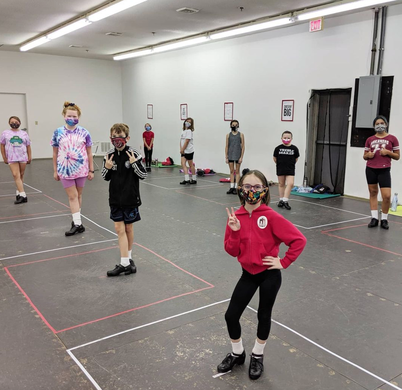 Hard shoe class! Hard shoe class! 7 years later and SRL is a tight-knit community that instructs in the storied tradition of Irish dance for those as young as 2-years-old (check out Tiny Jig to learn more!) into adulthood (check out SRL After Dark to learn more!) We take this traditional art form and honor the artistic components while taking a modern approach to what has become a highly athletic discipline. We train our dancers to identify and work towards their own, personal goals—whether that be recreation, casual performances, or the competitive track. Our structured environment, supported by our knowledgeable instructors, focuses on the whole dancer: technique and whole-body conditioning to be sure, but also the promotion of healthy life skills (such as setting and achieving goals, teamwork, focus, and dedication.) In line with that, SRL offers mentoring opportunities at every turn—from class helpers to buddies at dancers’ first competitions and performances—and cultivates a spirit of support and community that’s really what Irish dance is all about! Our small, but passionate staff is ready to help guide and encourage your dancer—whether they be just starting out or qualifying for Worlds—through structured lessons that optimize their opportunities to grow both as dancers and as people. While Irish dance has a long tradition (read more about its origins here!) and strong ties to Ireland’s national identity, you don’t need to be Irish to do Irish dance. As the Irish diaspora has spread across the world, Irish dance has become more than a traditional art form (though it retains those roots and music)—it’s a global community. All you need to join in is passion, dedication, and someone to teach you—and we’d love to help out! 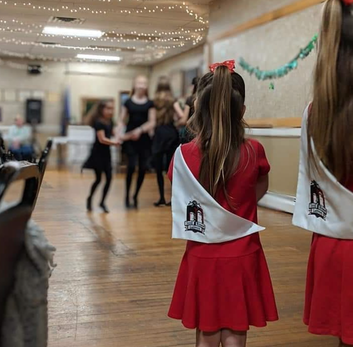 SRL is registered with the CLRG, the Irish Dance Teachers of North America, and the New England Irish Dance Teachers. While classes run on a school year schedule from September to June (with every class available as in-person, online, or a hybrid model,) we have a special offer to let new dancers get a taste before they sign up in the fall! SRL’s Intro to Irish Dance Summer Camp sign-ups are now open for new dancers 2-12, with two sessions available at work-friendly drop off times for parents. Learn more about the program here, or feel free to reach out to our Office Manager, Devon, at 860-385-1107 or shoot her an email at [email protected]. She’s happy to help! This post is part of a series. Take a look at our last 411 post, all about the benefits of Irish dance, here. Also: check out the blog every Monday and Thursday for more posts about Irish history, dance culture, community news, and spotlights on our dancers, staff, and families—among other fun projects! And don’t forget to dance along with us on both Facebook and Instagram. 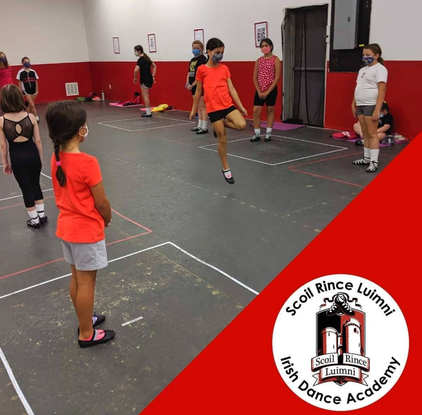 The question Irish dancers get asked the most is: why Irish dance? There’s a lot of amazing things to love about this artistic sport—its long and storied history, cultural enrichment, and beautiful costumes, to name a few—but the benefits of this particular type of dance can be wide-reaching, both physically and mentally, and even life-long! Let’s explore some: Motor Skills & Mind-Body Connection: At the youngest age range—we offer classes starting a 2-years-old!--we concentrate on motor skills and correcting any left/right imbalances early in their development. Starting dance at any age is beneficial, but check out our post about the benefits of starting your dancer early here. Flexibility, Balance, Coordination, and Strength: While many dance studios in the past concentrated more on the steps than the conditioning, SRL has always been committed to providing balanced training that looks at what the whole dancer needs, not just their feet! All age groups are doing more than learning to dance, they’re stretching and completing exercises in class that strengthen the whole dancer. Independence: Whether your dancer is 12 or 2, they’ve been spending A LOT of time with you over the last year. Going into dance class by themselves can be the first step toward forming their own personhood in this time when kids have been isolated at home more than ever. It’s also a fun, safe space for your dancer to make new friends without parental influence! 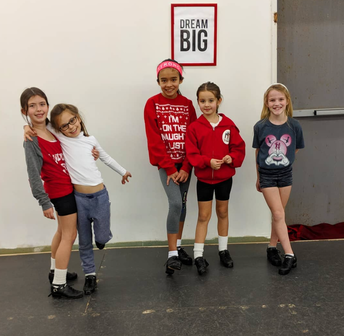 Musicality: Irish dance is unique in many ways, but its connection to music is particularly strong! (Learn more about music in Irish dance here.) Dancers not only develop their sense of rhythm and a deeper understanding of music, but also cultivate an appreciation for traditional Irish music, often choosing to supplement their dancing by learning to play an instrument. Social Skills and Teamwork: Not all of Irish dance is a solo performance! Dance class is a great time for your dancer to practice appropriate social skills, as well as make new friends. Later goals can include céilí dancing and teams, where dancers learn to dance in unison and work together. Goal Setting and Self-Determination: Whether the goal be big (going to Nationals!) or smaller (getting to perform in a fancier dress,) SRL is all about small, every day steps leading to larger goals. We help each dancer set personal goals in their dance career, and this example has proven to carry through in many dancers’ school performance and at home behavior. Irish dance is more about building up skills over time, and is less about instant gratification and more about hard work and dedication—skills that will serve them all their lives! 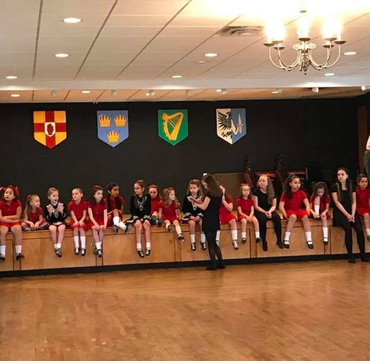 Community: SRL is a community-focused studio where we’re all about supporting each other, even when we’re competing! But Irish dance is more than our studio, it’s a tight-knit, but also global community. All you need to enter that community is a love of Irish dance, and then you’re welcome! Interested in seeing all that Irish dance has to offer? Check out SRL’s Intro to Irish Dance Summer Camp for your dancer! This is a low-commitment way for students 2-12 (and their parents) to gage interest before signing up for classes. Check out the details (and the deals your session will include!) here. We hope to meet you soon! Have any questions? Feel free to call or text our Office Manager, Devon, at 860-385-1107 or shoot her an email at [email protected]. She’s happy to help! This post is part of a series. Take a look at our last 411 post, a longer explanation of our Intro to Irish Dance Summer Camp program, here. Also: check out the blog every Monday and Thursday for more posts about Irish history, dance culture, community news, and spotlights on our dancers, staff, and families—among other fun projects! And don’t forget to dance along with us on both Facebook and Instagram. 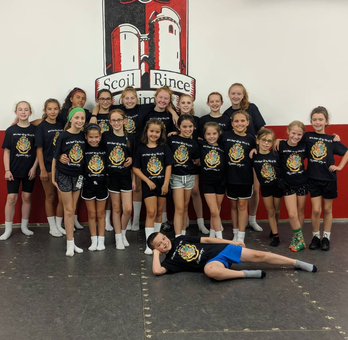 SRL campers in 2019! SRL campers in 2019! Does your child love to jump, wiggle, and move? Have they been bouncing off the walls all year? Are they obsessed with watching dance videos on YouTube when they get their coveted screen time? (Us, too!) Maybe it’s time to find a new outlet for all that excess energy…and why not try Irish dance? With Scoil Rince Luimni’s Intro to Irish Dance Summer Camp program, dancers from ages 2 to 12 will spend a week of classes letting that built up energy out, learning a new skill, and having safe, positive social interactions with new friends! This program is designed to really let your child try out this extremely active and fast-paced artistic sport in a secure and fun environment, but also to let you, as a parent, see if this is the right fit for your family. During one of our two Intro Summer Camp sessions, your dancer will take one class each evening (at a work-friendly time for parents,) for a full week to help them gage their interest (and get in some social time and physical exercise!) 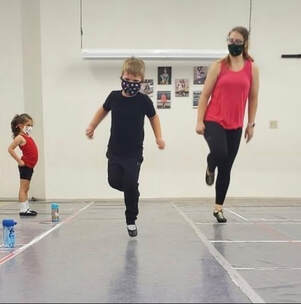 One of our Beginner classes! One of our Beginner classes! As Irish dance has innumerable benefits (like increased coordination, flexibility, balance, and strength…along with musicality and life skills such as goal setting, teamwork, and self-determination,) we’ve added extra value to the Intro to Irish Dance Summer Camp program, as well! While you’ll be able to meet our staff, explore the studio, and get a feel for what Irish dance is all about, your purchase of a session also waives your Fall 2021 registration fee and gifts you the first four weeks of classes come September for free! For our littlest dancers in our Tiny Jig or Pre-Beginner programs (2-5) this is a $155 value for only $82.50, and for our Beginners (6-12) a $216 value for only $132. Sign up and see the full details here: Session 1: July 19-23 or Session 2: August 16-20 Ages 2-3, 5:00-5:25PM Ages 4-5, 5:30-6:00PM Ages 6-12, 6:00-6:45PM Have any questions? Feel free to call or text our Office Manager, Devon, at 860-385-1107 or shoot her an email at [email protected]. She’s happy to help! We look forward to dancing with you soon! This post is part of a series. Take a look at our last 411 post, all about the general benefits of summer camps, here. Also: check out the blog every Monday and Thursday for more posts about Irish history, dance culture, community news, and spotlights on our dancers, staff, and families—among other fun projects! And don’t forget to dance along with us on both Facebook and Instagram. 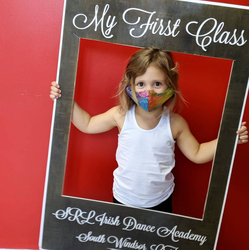 Start your dancer this summer! Start your dancer this summer! While innumerable things have changed in our world in the last year, no virus can stop the seasons from changing. From this vantage point in March, we’re all dreaming of spring, but parents know there’s something slightly more ominous looming in the horizon: summer. Two or three whole months of no school, and these days, little social interaction outside the house. But since the 1870s, parents have been turning to the most active possible solution to keep their kids engaged during the hottest months…summer camp! Connecticut has a long history with summer camps, with the first American summer camp having been founded in Gunnery, CT just after the Civil War. The idea caught fire and in a less than 20-year period around the turn of the century the number of summer camps in the United States rose from 100 to over 1,000. These first camps were all about removing children from urban environments to reconnect with nature, and this kind of summer camp hasn’t changed all that much since. But after WWII, parents were eager to return their children to a more innocent time and summer camps had a second boom—this time with a wider range of variety as special-interest camps such as sports camps and arts camps popped up all over the country. 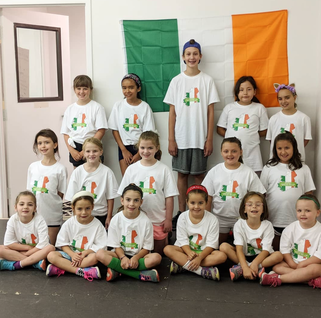 A SRL Summer Camp pre-pandemic A SRL Summer Camp pre-pandemic But what has made the summer camp an American institution? The skills taught at summer camps—be it outdoorsmanship or art forms like dance—have always been only part of the equation. The Harvard Graduate School of Education puts it this way: “All those classic camp dynamics—being away from home and parents, making new friends, being part of a team, and trying new things—are building blocks to crucial social-emotional [learning (or SEL)] skills.” Foundational, SEL skills include “self-awareness, self-management, social awareness, relationship skills, and responsible decision making” and have been found to be crucial for both success in school and in later, professional life. But, unfortunately, due to the restraints placed on teachers by state-mandated curriculums, we often see this type of learning not prioritized in the classroom. Americans have been turning to a solution outside of school for 150 years now, and we have the data to back it up: a 2005 study conducted by the American Camp Association found consistent and significant growth in SEL skills (and self-confidence) in children after only a single summer camp session! As important as SEL skills are, there’s another factor that’s helped give summer camps such staying power: the physical benefits. The majority of summer camps have always included a focus on physical activity, and in our increasingly digitized world, finding a healthy and active outlet for kids is more important than ever. We all know that our country has been facing issues for years when it comes to the health of younger generations—but it turns out summer camp could be of help. In a 2011 edition of the Journal of Adolescence, a study reported that adolescents with no organized summer activities were at the greatest risk of obesity, while a 2010 study found that day camp campers who were exposed to active peers and active teachers were more likely to be physically active even after camp ended. While a week of physical activity is definitely good, the way camps instill the habit of exercise is even better! 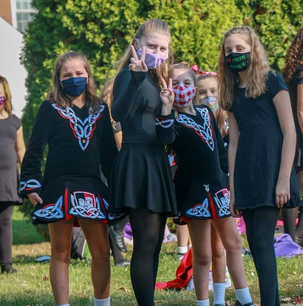 SRL dancers chatting before a performance SRL dancers chatting before a performance While our registered dancers here at SRL Irish Dance Academy (from Beginner level up!) know all about how fun one of our summer camps can be, what about someone who’s never attended an Irish dance class? Don’t worry, we have a great option for even the newest dancer, as well! SRL is hosting two, week-long “Intro to Irish Dance” Summer Camps this year. Each week consists of five straight days of one class a day (at work-friendly times for parents!) to give new dancers a real feel for our year-long programs. The best part? Until May 1st, SRL is running a deal that will carry you into the school/dance year: sign up for this "Intro" Camp and we'll include a free four-week Taster Session in September (and wave your registration fee when your dancer falls in love with Irish dance and insists on signing up!) This camp is multipurpose, for not only will it ease any parent’s mind about how interested their child is in Irish dance before enrolling for the year, but it will provide that social and physical outlet kids need every summer (but this one especially!) Even if your child finds out Irish dance isn’t right for them, they’ll still be invited into a fun, welcoming environment, taught to stretch and move their body in new ways, and be able to interact with their peers as both team mates and friends while they increase their self-esteem by learning a new skill. We’ve been holding classes in our clean, appropriately socially-distanced studio since September without any issue, and are excited to introduce your child to the world of Irish dance! 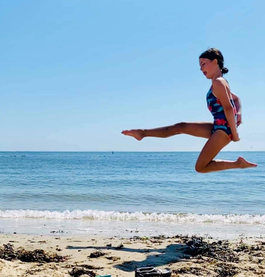 Why not spend the summer dancing? Why not spend the summer dancing? We could go on and on about the benefits of starting dance early (and we already have! check out our post about it,) but the real takeaway from SRL’s intro program is the same as any camp: increasing your child’s SEL skills while allowing them to express themselves in a healthy way and have fun! This opportunity creates a break from technology, lets them develop a sense of independence, let all that silly energy out, and have more and varied social interactions. And, not to mention, it gives parents a much-needed break, too! Learn more about our “Intro to Irish Dance" Summer Camp—with a special discount (and additional savings!) running until May 1st! Or feel free to reach out by phone or email ([email protected]) for more info. We look forward to dancing with you soon! 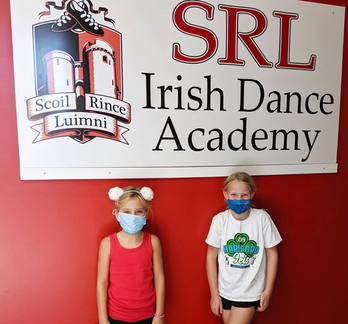 If you’re reading this, it’s fair to say that you’re probably browsing the SRL site. And if you’re browsing our site, you may be considering signing your child up for Irish dance. One of the most common questions any studio gets asked is: how old does my child need to be to start dance lessons? Our answer is always the same: If you can walk, you can dance! While dance has been proven to be beneficial to all age groups and we’ll never discourage an older student from beginning, there’s upsides to starting early. First of all, let’s acknowledge the elephant in every single room: it’s 2020, so your kids have been spending ALL their time with you. And as much as some extra family time has been the major benefit of this year, it does mean less opportunities for your child to develop a sense of independence and personhood, as well as for practicing social skills outside the home. There’s no “Mommy and Me” classes at SRL—we see even our Tiny Jig classes (for 2 to 3-year-olds) as a way for our students to not only learn to dance, but also: practice taking turns and sharing attention with others, being kind and respectful to peers and adults, learning about personal space boundaries, as well as a myriad of other not just social, but developmental skills they may not have a lot of chances to practice right now. Beyond the developmental benefits dance can foster, are the physical benefits. Our youngest classes concentrate not only on dance skills, but help improve motor skills, as well as help catch and correct any issues with right-left dominance. And, of course, it’s excellent exercise. (Especially during New England’s winter months!) Innumerable studies confirm that dance also improves cognitive ability and can led a better quality of life. Why? While there can’t be a downside to forging a mind-body connection early in development, dance classes also help kids practice patience, goal setting, and routine—all things that will benefit them in their future studies—as well as musicality. We’ve all seen the reports about how stimulating music is for the brain—why not develop that appreciation early? Additionally: if your child is already interested in dance, they may want to continue with it as they get older. Early dance classes aren’t a requirement, but they will lay a good foundation for your dancer’s success later on by instilling technique and creating a well-rounded dancer. In fact, it will be beneficial for any physical activity they choose—haven’t you heard the stories about NFL players taking dance classes to improve their coordination, flexibility, and footwork? With fewer children attending in-person preschool or even elementary, SRL’s dance classes provide a safe, socially distant space (with small class sizes to assure safety and close attention to all students and online options) for your kids to grow, learn, and play. It may not be easy right away—your kids may get discouraged or have the occasional tantrum or issues listening—but that’s what dance is about: learning, growing, and pushing through. Irish dance, like life, only has a couple moments of instant gratification…but isn’t that what makes real, earned successes all the sweeter? Here at SRL, students get moved up levels as soon as their skills have progressed, not by any specific age designation (that’s just to start!) Your child’s hard work is the only thing rewarded. And what better lesson to instill in your kids at a young age than that? Hear our Director, Courtney Jay, TCRG, discuss the benefits of our programs (for children as young as two!) here: This is our second Saturday bonus post! Check out our first here, all about battling back to school burnout. And check out the blog every Monday and Thursday for more posts about Irish history, dance culture, community news, and spotlights on our dancers, staff, and families—among other fun projects! And don’t forget to dance along with us on both Facebook and Instagram
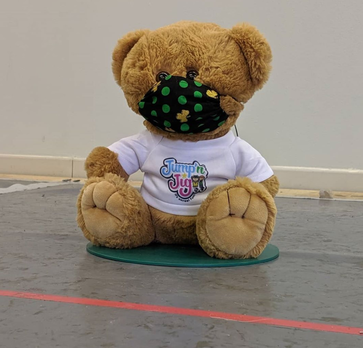 No matter how many years out of school I am, I’ll always think of the new year as starting in September. Somehow, New Year’s Eve has nothing on the smell of freshly sharpened pencils, new books in a new backpack, and that outfit that’s just a little bit too hot for the weather (every year! I never learned.) But, for everyone still actually school-age, especially in the year 2020, there’s also the downside to all the excitement: having to learn a new routine after months and months of routine-free fun. Your happy kid, so full of energy all spring and summer, suddenly doesn’t want to do anything. This is the year you signed them up for new activities they’d been begging to try (maybe even an Irish dance class?) and all of a sudden they have no interest. So, what now? The back to school burnout is real, and probably worse this year for the obvious reasons. The first step is simple: recognize it’s happening and understand that it’s normal. And, as much as it’s normal, remember the adage that’s now backed up by a bevy of scientific research: children need routines. Regularity in daily and weekly routines has been proven to produce better adjusted and more successful adults across the board, in all fields. Notable, studied benefits include improved attention span and self-control, better time management, decrease in anxiety, better social skills, a higher level of emotional intelligence, better academic performance, and even increased employability in adulthood (among others.) Expert tips about how to combat resistance to the new routine and avoid the worst of the burnout are pretty standard across the board: Commit to a reasonable number of activities, but don’t say yes to everything. Be flexible, but be clear about your expectations. Keep as regular sleep schedule as possible. Eat a balanced diet. Forge open communication within your family. Encourage asking for help whenever you need it. Put a limit on screen time. Make sure to make time to relax and decompress. Set goals and celebrate achieving them. One of the most constant and repeated tips? Exercise. Exercise. Exercise. While we at SRL recommend Irish dance classes as the best way to get up and going, 150 minutes of any moderate movement-based activity a week is the standard recommended by every medical organization. Why? Besides the obvious—physical health—exercise has been proven to help decrease stress and increase endorphins (among other happy-brain chemicals,) as well as boost overall energy and mental acuity. Simultaneously, exercise classes promote community and social development, while also promoting better sleep habits when your kids get home. That’s right, ironically, just getting them to the class they’re reticent to go to will help with everything else! Lastly, and just as importantly, remember that self-care isn’t just a buzz word, it’s how parents can continue to be great parents! We all need to take moments for ourselves throughout the day or the kids won’t be the only ones burnt out. Besides, let’s be real…you deserve it. This post is our first Saturday Bonus post! Check out the blog every Monday and Thursday for more posts about Irish history, dance culture, community news, and spotlights on our dancers, staff, and families—among other fun projects! And don’t forget to dance along with us on both Facebook and Instagram. 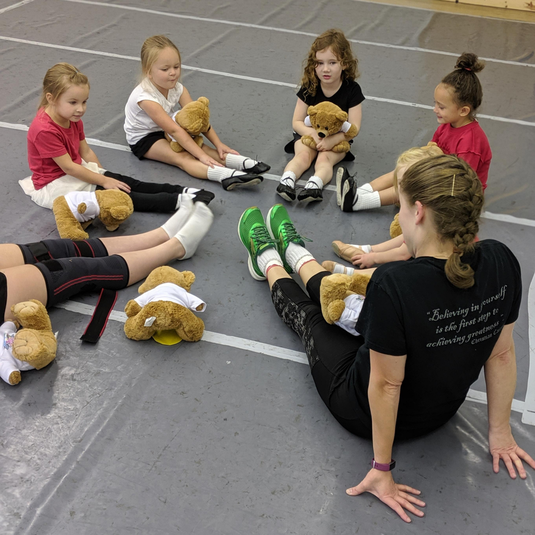 So we can’t sit this close together right now - don’t let that deter you from the many benefits dancing can offer your little one! We know how important it is for toddlers and pre-schoolers to interact with their peers. Interacting with other children their age is a huge part of their social development and it can’t be recreated at home with siblings and parents. This has always been a huge part of our Pre-Beginner program and it is more important now than ever before. In our small dance classes (maximum of 8 students), tiny dancers learn to take turns, share the attention of their instructor, follow directions, and most importantly build their independence from their caregivers. After months of staying home or with close family, it will be very normal for children to experience separation anxiety. The longer you avoid independence building activities, like dance class, the more severe the anxiety may become. Our popular Jump’n Jig program has been adapted to allow for physical distancing without sacrificing any fun! We want you to feel safe joining us and allowing your little dancer to enjoy time to jump, wiggle, and jig with us! 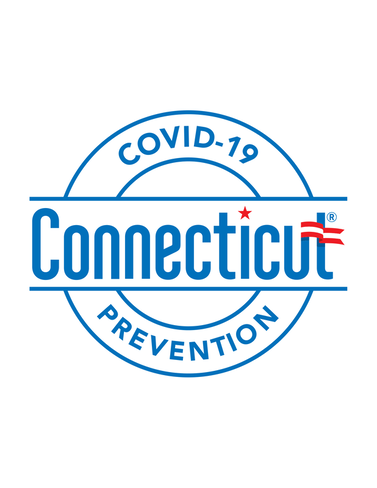 We are so excited to re-open our doors this Monday June 29, 2020! It has been too long since we've heard giggles in our halls, seeing practices of the latest Tik-Tok craze, and the sound of trebles on our wooden floor. While the reopened studio will look and feel different than pre-pandemic times, the heart and soul of our community will bring the warmth and comfort we're all seeking. Our last in-person classes were Friday March 13 and I will never forget how that week unfolded in slow motion as we all watched our world change in disbelief. Right in the midst of St Patrick's Day excitement, events that our dancers look forward to and work hard for as long as 6-months prior, everything came to a sudden halt. Schools were announcing two week closures, businesses were shutting down, and families sheltered in their homes to stay safe and healthy. Never again will we take for granted trips to the grocery store, play dates with friends, or hugging others for greetings or goodbyes. During our time at home, students continued their dancing online in our virtual studio (thanks Zoom!) and we heard so many times from parents how dancing was the bright spot in their child's day, the meeting they most looked forward to, and how on days they had dance class their mood was better. Others struggled with only being able to connect with their instructors and classmates through the computer screen or losing the huge dance floor and mirrors they were used to. Our re-opened studio is outfitted with changes for everyone's health and safety - small class sizes, physical distancing during classes and within the building, mask wearing when less than 12ft apart, restrooms outfitted with new faucets and dispensers to prevent surface contact, new entry/exit and drop off procedures, and of course - lots of hand sanitizer. While on the surface it looks cold, clinical, and that some of the joys have been taken away, we're confident that our people make the studio: our dancers, their families, and our staff. We know that bringing together (6 or more feet apart, of course) our community safely, the mental and physical health of our dancers will improve long after they've left the studio from the in-person interaction, returning to a familiar place, and experiencing class outside of their computer screen. Stay tuned for program options for new students. We know there are families who are looking for safe activities for their children to resume movement and social interaction over the summer and we want to be your destination for dance! 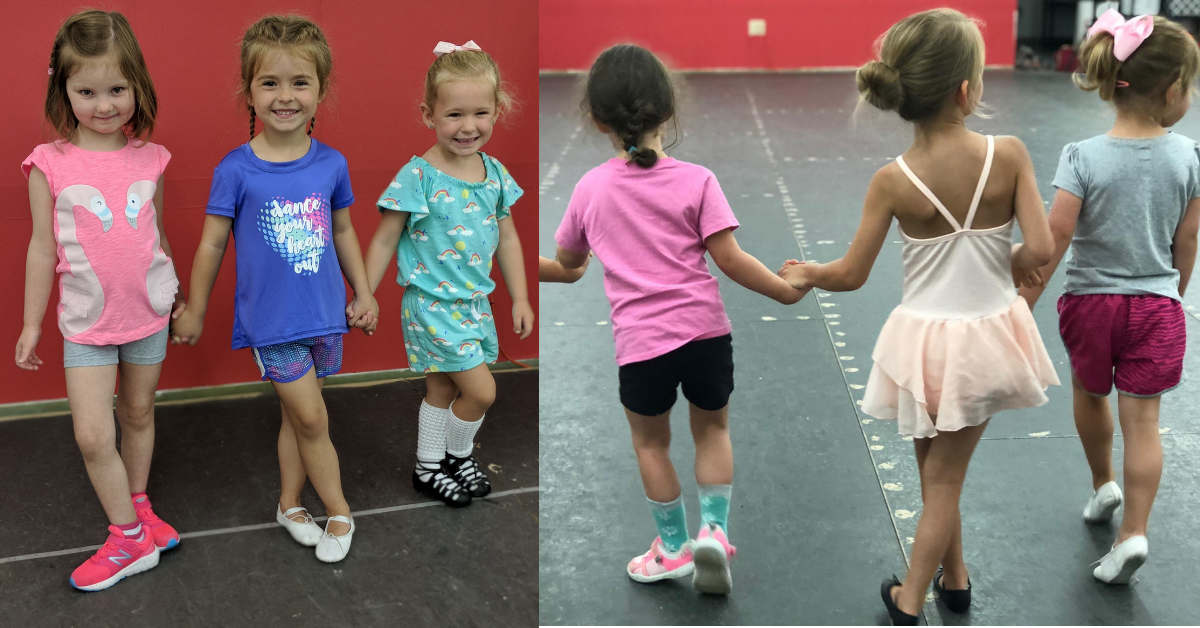 What’s the best way to get 2-4 year olds started Irish dancing? It’s Jump’n Jig, and Scoil Rince Luimni is the only school in Connecticut to offer this program for pre-schoolers! The program was designed by Irish dance teacher, adjudicator, and early-childhood expert Fiona Holmes ADCRG and is tailor-made for our youngest dancers to learn and understand how to be in a dance class, develop their motor skills and musicality, and of course enjoy every moment of their class. Each portion of class is designed with the preschooler in mind, from the inviting welcome, a reminder of our expectations and manners within the studio, social engagement between the dancers, working on our listening and dancing skills, and rewards and positive reinforcement. There are two movement stations within the class - one in a circle so all students can engage closely with each other and the instructor and a long line acting as a ‘track’ for dancers to practice various skills. We open and close class in the circle and incorporate props kids love - teddy bears, wands, musical instruments, and more! Along the track, we work on our single leg balancing, single leg balancing with accessory movements, leg and foot strength, moving on or around markers and targets, foot placement for Irish dancing, and the concept of right/left and front/back. As dancers become more proficient with their motor skills, they progress to dance skills that will help them transition to our Beginner program when they are old enough. Dancers also practice actively listening to the music and finding the beat by clapping and utilizing props so they can dance WITH the music instead of TO the music (the hardest thing to teach a dancer!). Our Pre-Beginner program is all about setting each preschool dancer up for success - and by success we mean happy, confident, and comfortable with their abilities and in their class. Dancers who love to dance and have strong foundations will grow to work through the inevitable bumps in the road or challenges they may face as they progress. Ready to join in? We have limited space in our Saturday morning class and we have a brand new class opening Friday mornings in October. 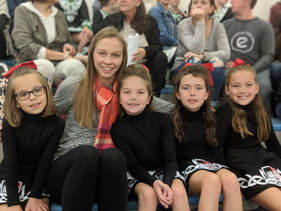 To all of my amazing dancers on the (almost) eve of the Oireachtas, I am so proud of you. Thank you for your hard work in preparing for this big event and I want to let you know how honored I am to be part of your team. After months of classes, practices, private lessons, competitions, and an emotional breakdown here and there, I want you to know that no matter what happens you’ve already won. There are not many kids these days that are willing to make the sacrifices you have made to excel at their sport. There are not many kids dedicated enough to something to keep putting in the work day after day, week after week, when the reward isn’t guaranteed and is often far in the future. As long as you stay calm, project confidence, dance like you do in class, and show great sportsmanship, there is nothing more I can expect or ask of you. Please let that comfort you and lighten the load you feel on your shoulders. I’m sure you have put greater pressure and expectation on yourself and I don’t wish to add to that. Remember to be kind to yourself and be your own number one fan. I hope that you can celebrate your result no matter what your ranking is - after all, this is one day among many in your dance journey. This is one little mile-marker along the marathon that is your continual self improvement and you HAVE improved just by peaking for this event. Even if you feel a sting of disappointment, remember that it’s okay to feel that pain temporarily but it’s also important to not let it keep you down or become a limiting belief. Instead, dust yourself off and be ready to cheer on your friends. Just because you’re not happy with your own results doesn’t impact your ability to support others. Whether you win the whole thing or fall all the way to the bottom of the results, we turn the page together at the conclusion of the Oireachtas. Either way we move on to an improvement season, learning new choreography, and setting new goals and my opinion of your potential of a dancer does not change based on the outcome of this weekend. Your power is in your ability to take your result and use it for motivation. Finally, say thank you to your parents. While they may not receive a medal for their efforts, they should not go unnoticed or under appreciated. Together, we all stand behind you on your team and they make sure you get to class, get to competitions, have the supplies and equipment you need, and experience everyday’s ups and downs along with you. Now go out there and be fiercely you! You can do this, I believe in you! Courtney |
SRL NewsFind all of our latest news on our Scoil Rince Luimni Facebook page! Categories
All
Archives
August 2022
|
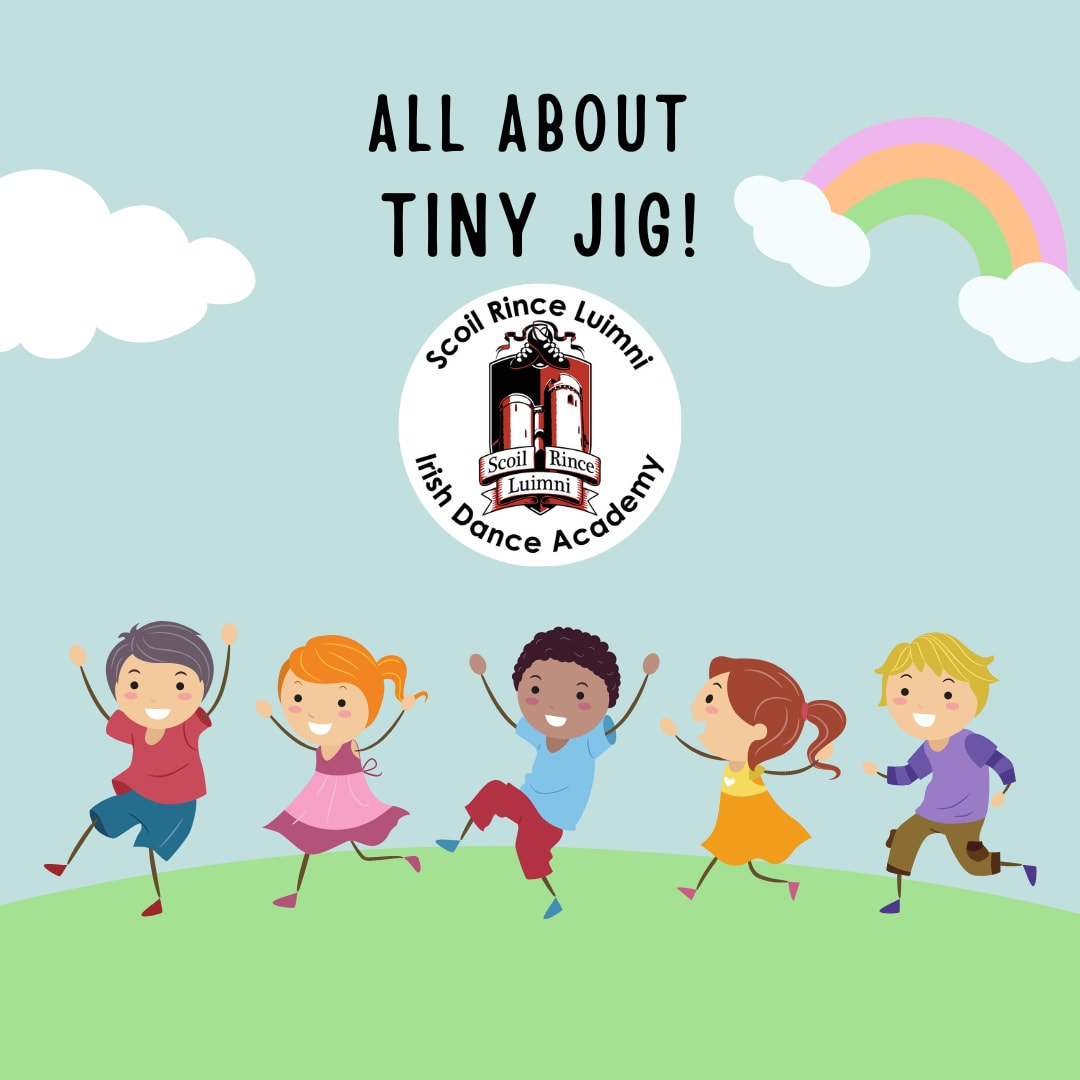
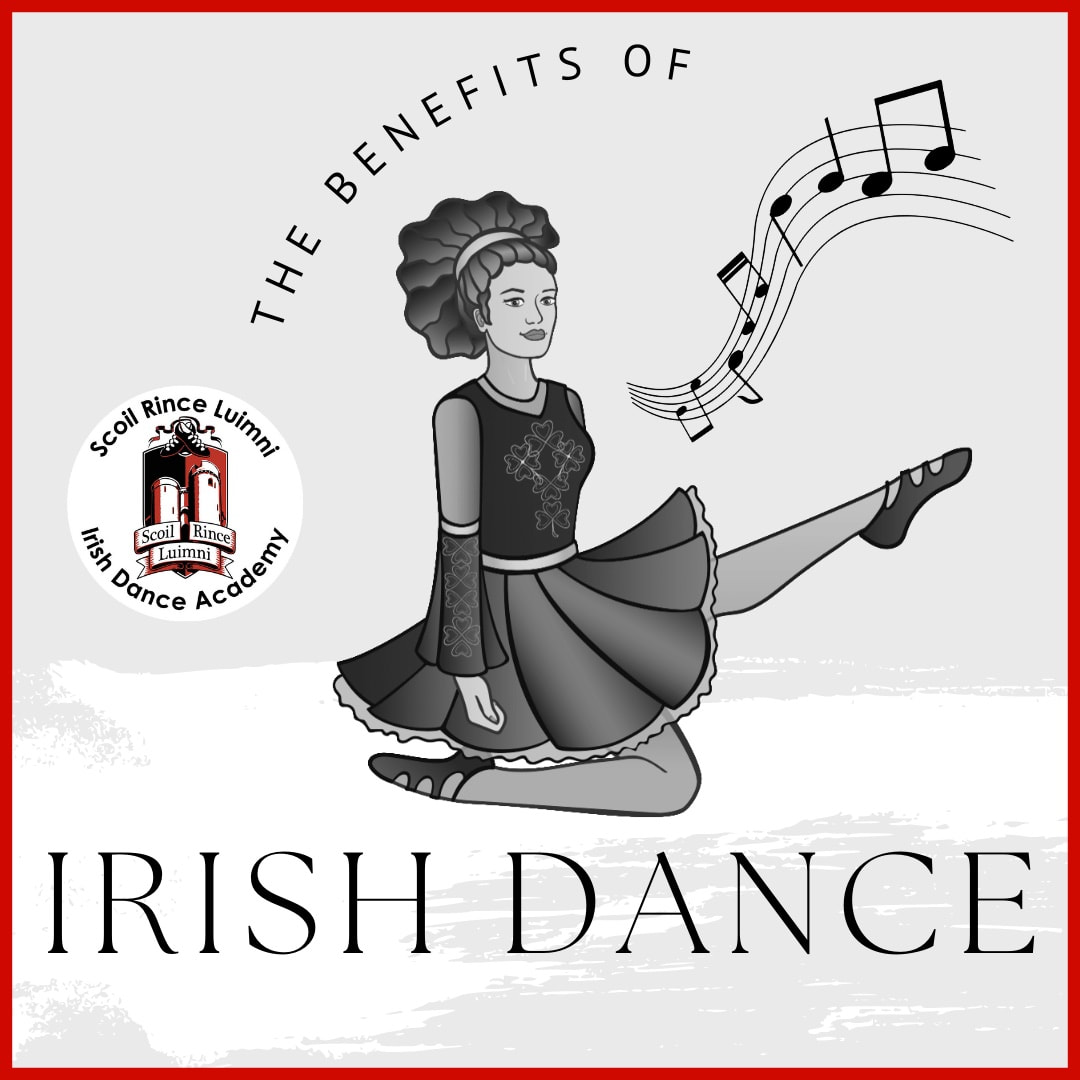

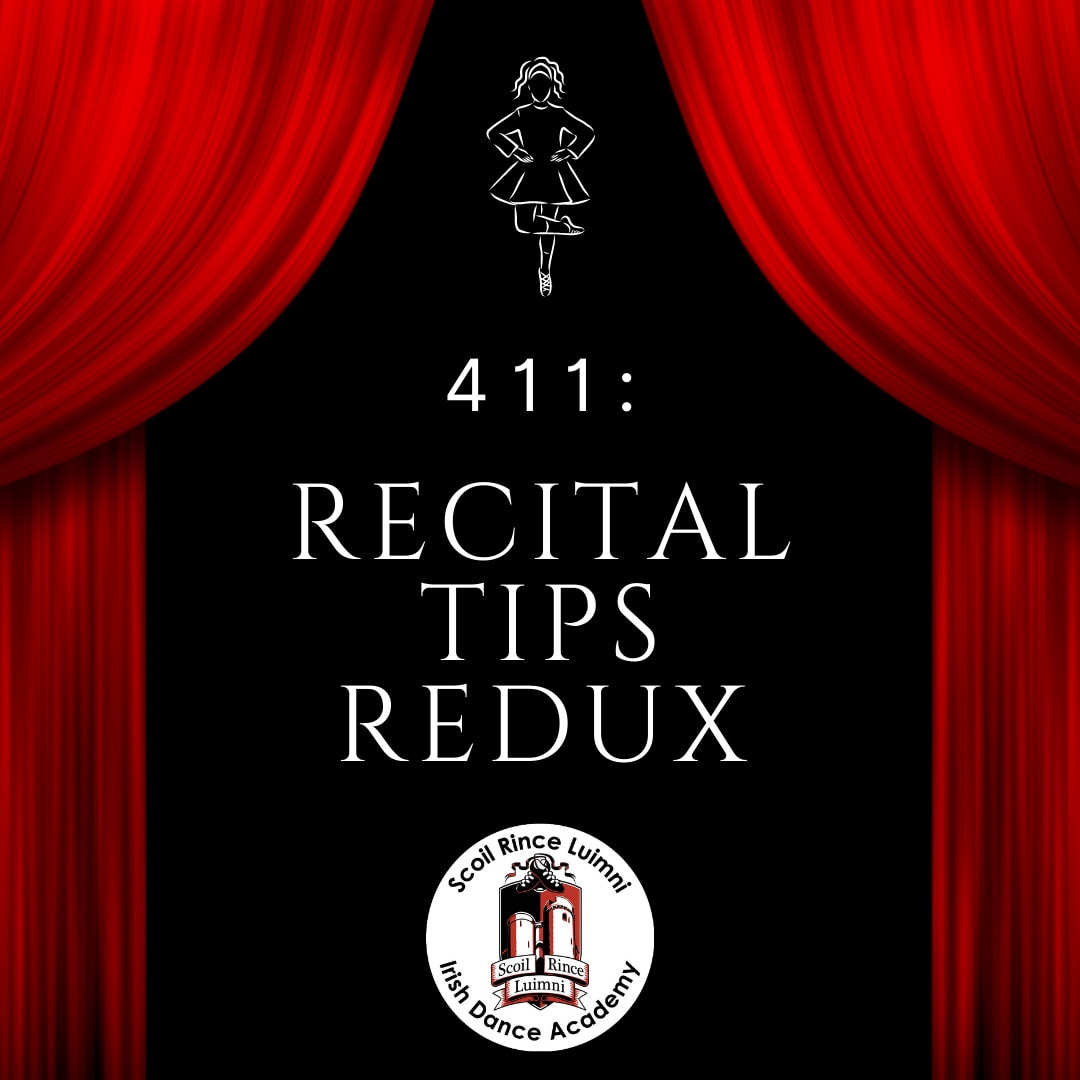
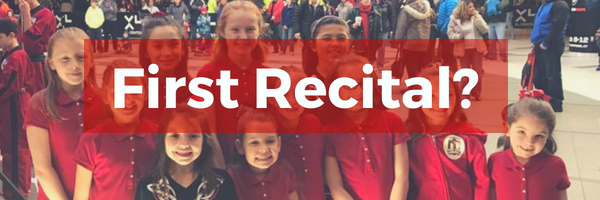
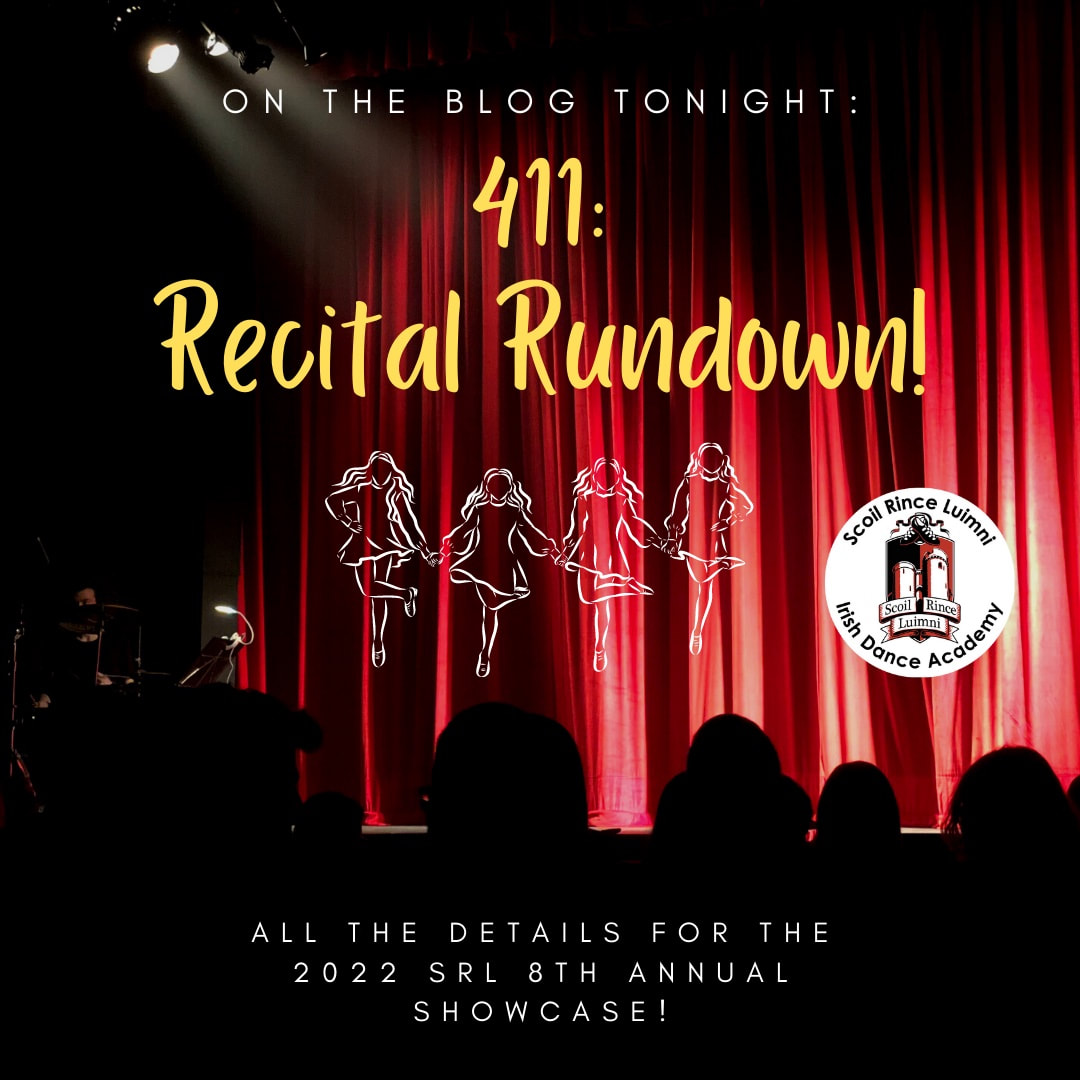
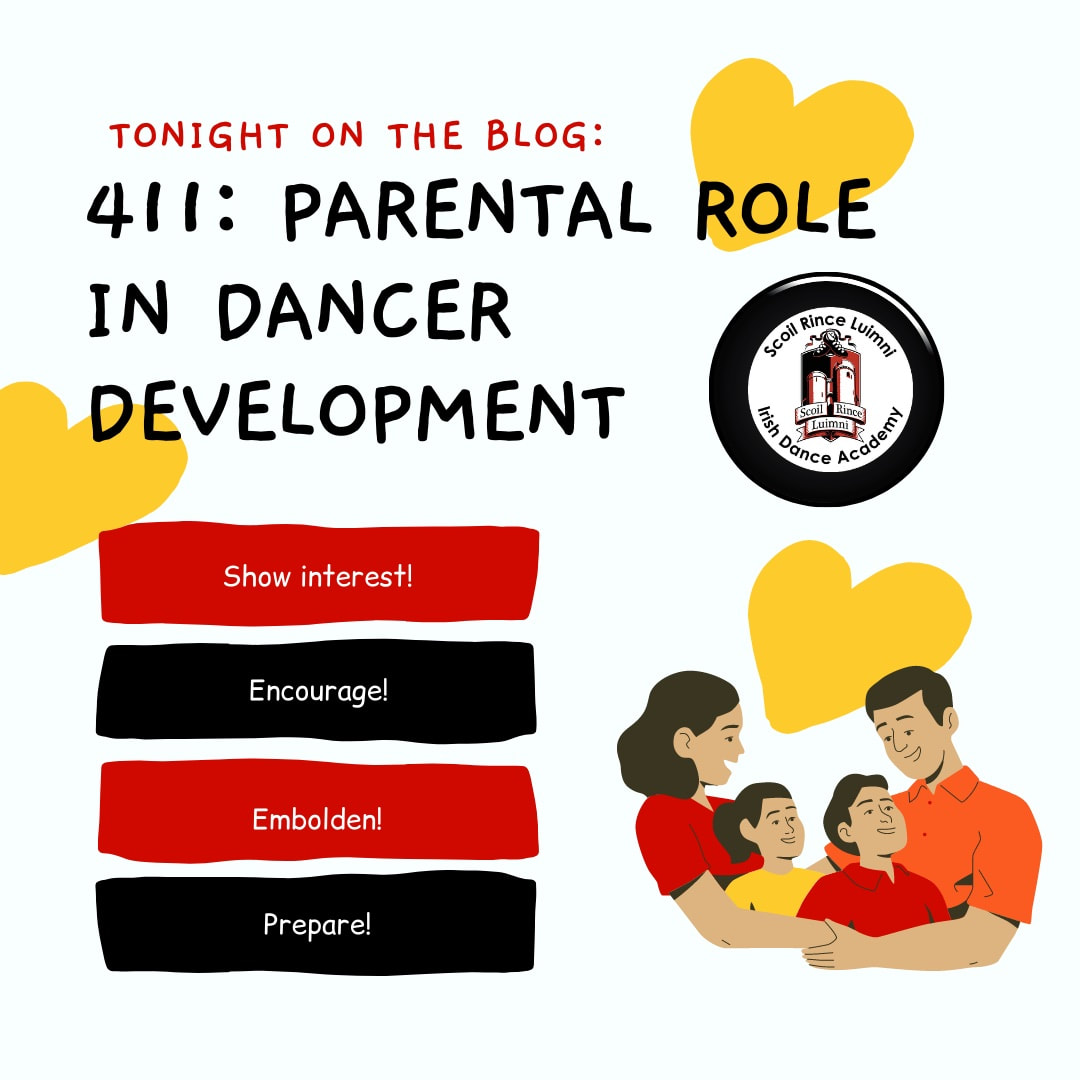
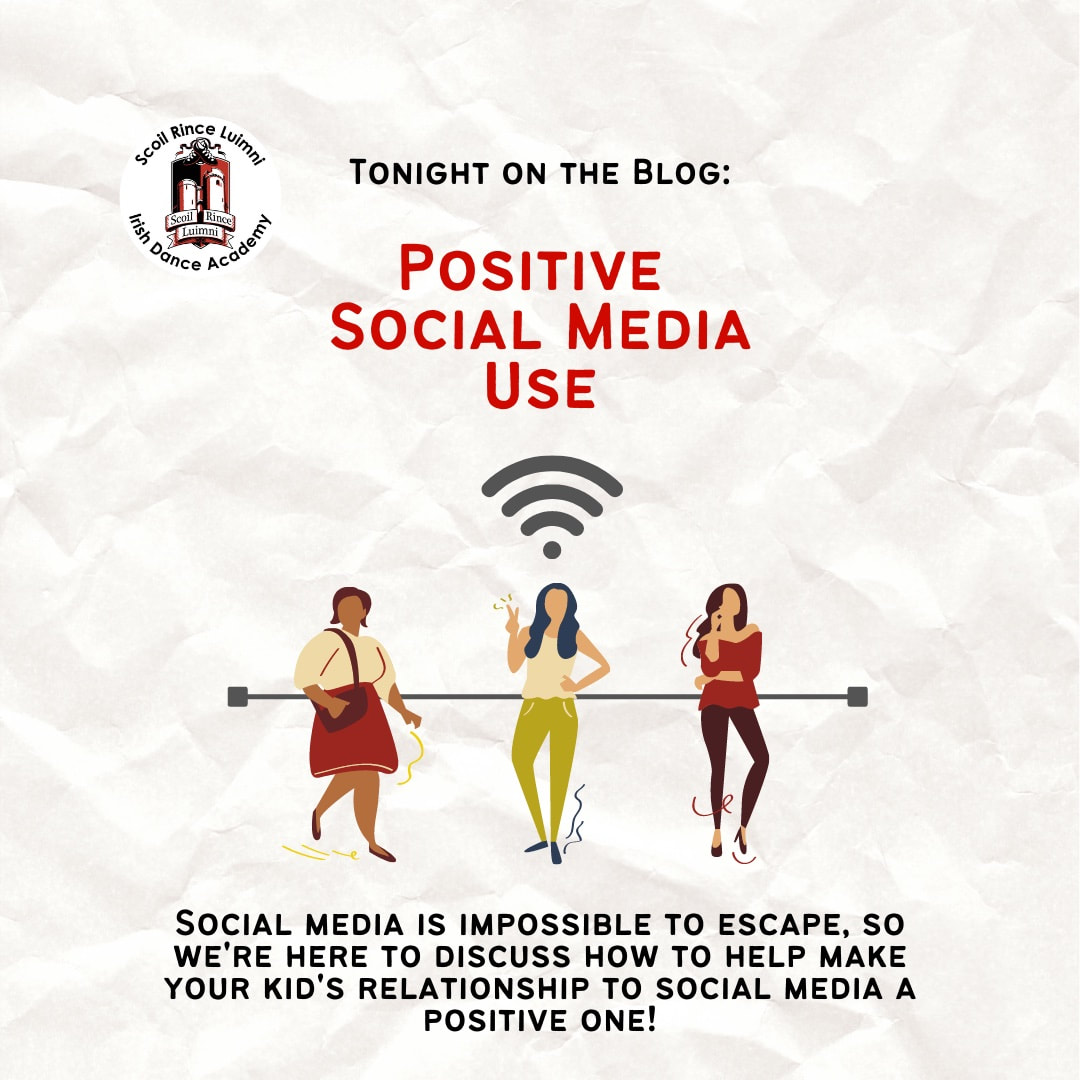
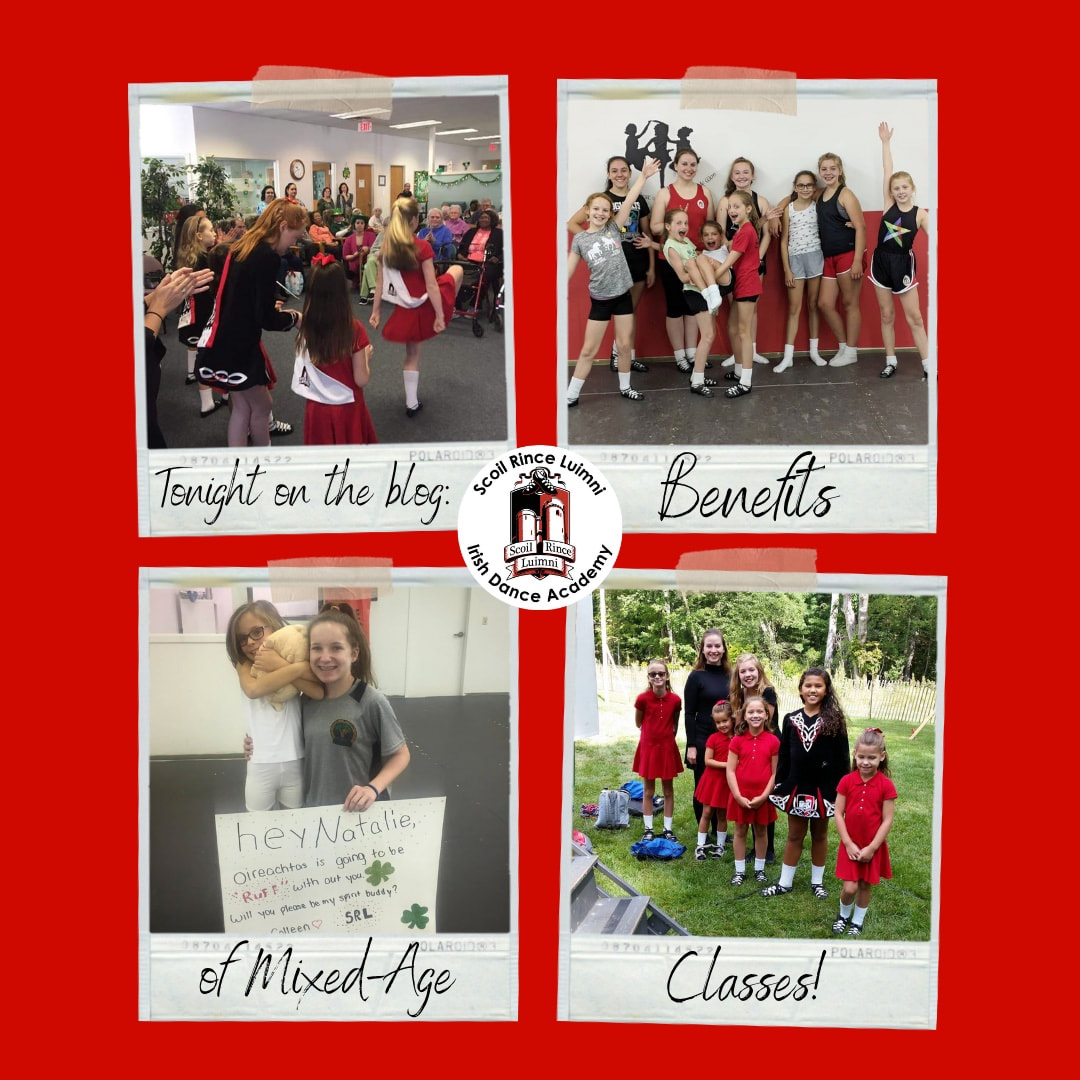
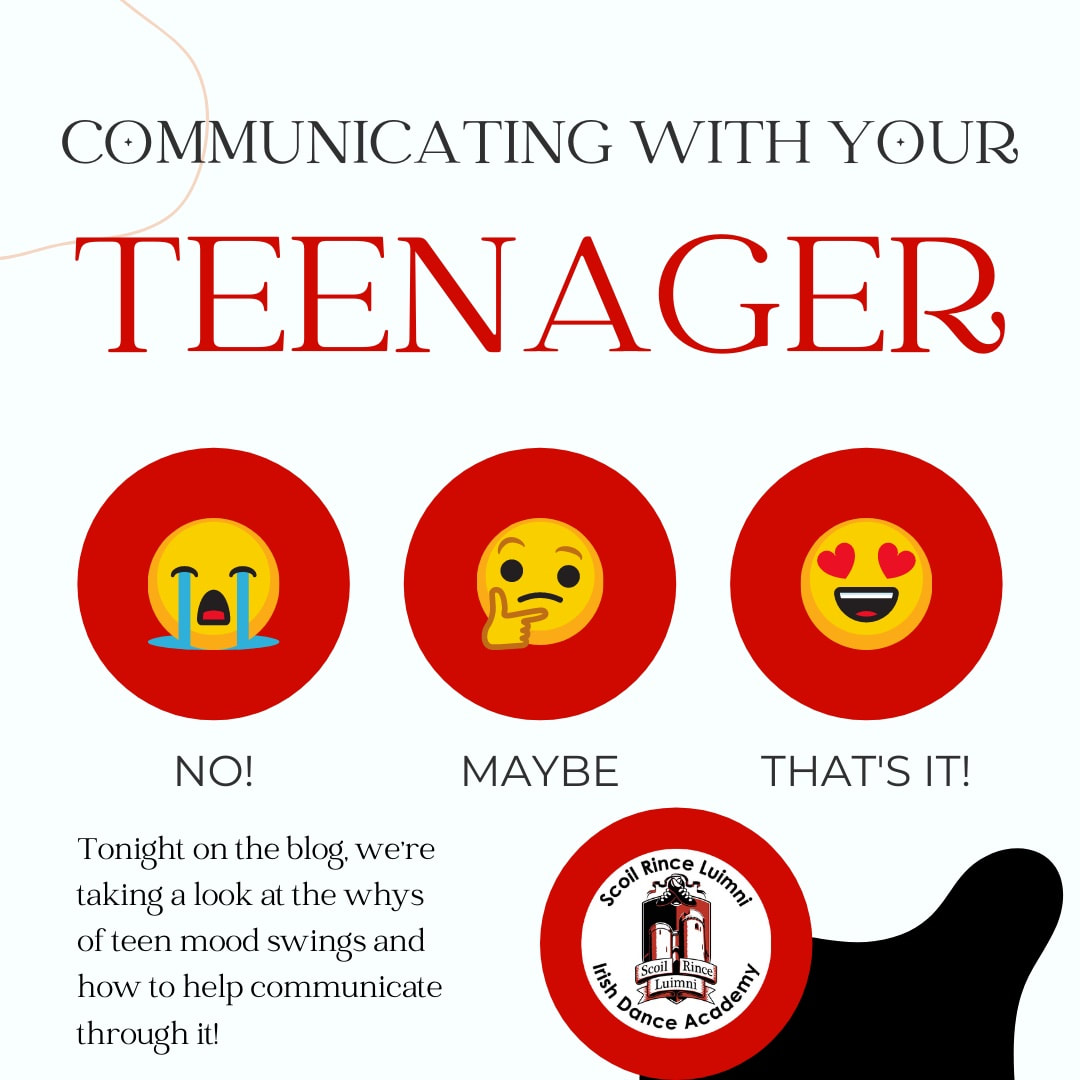
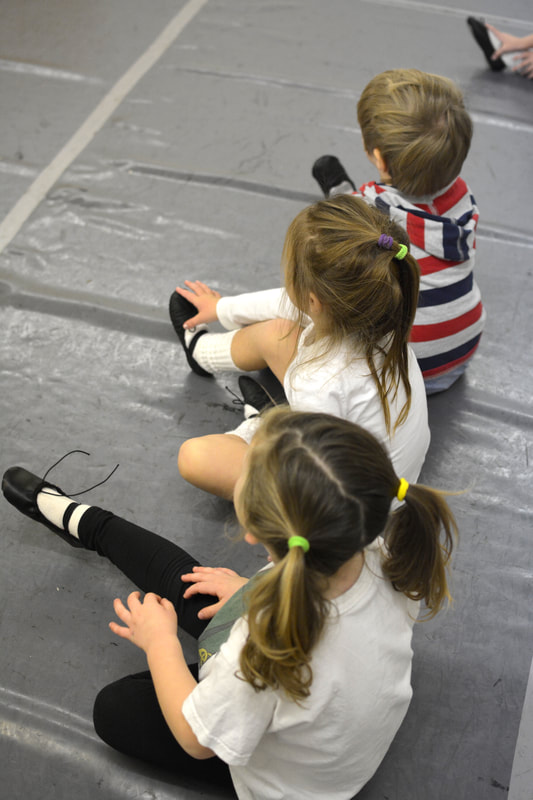
 RSS Feed
RSS Feed